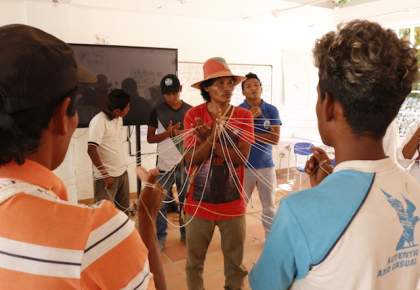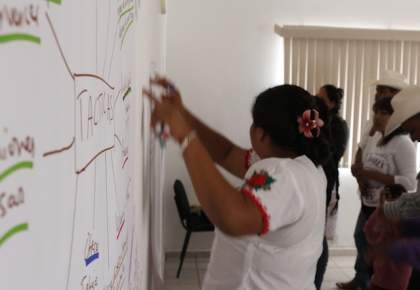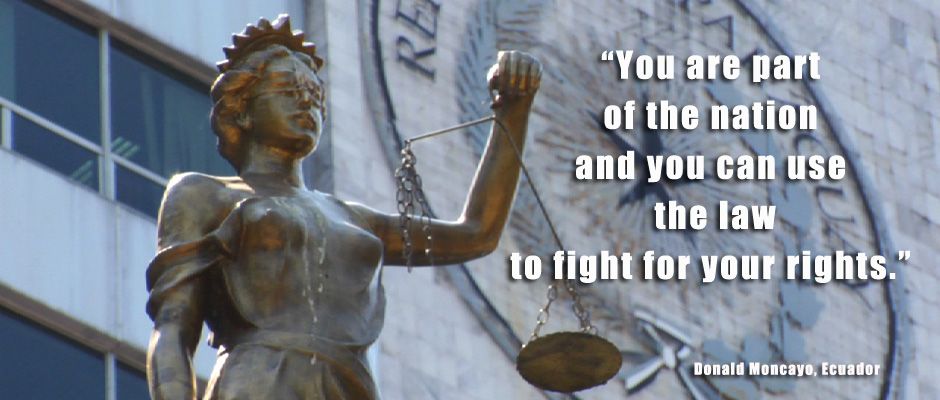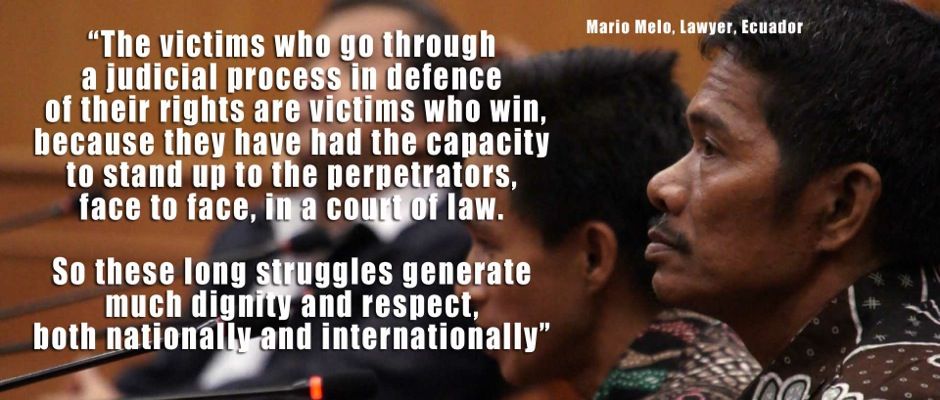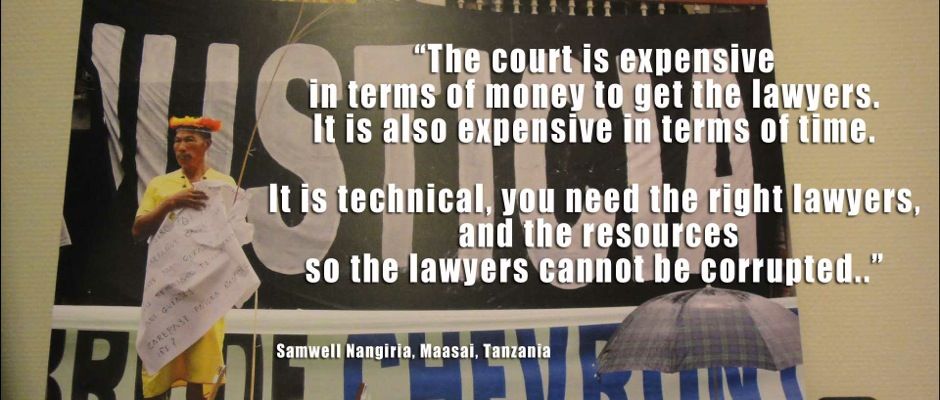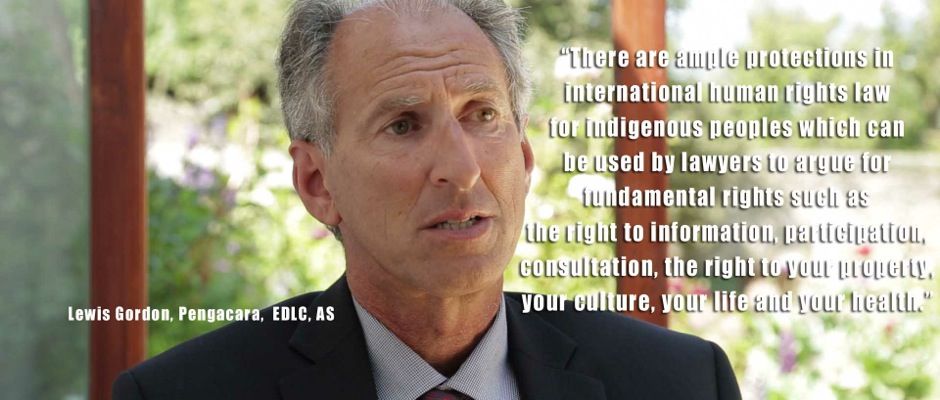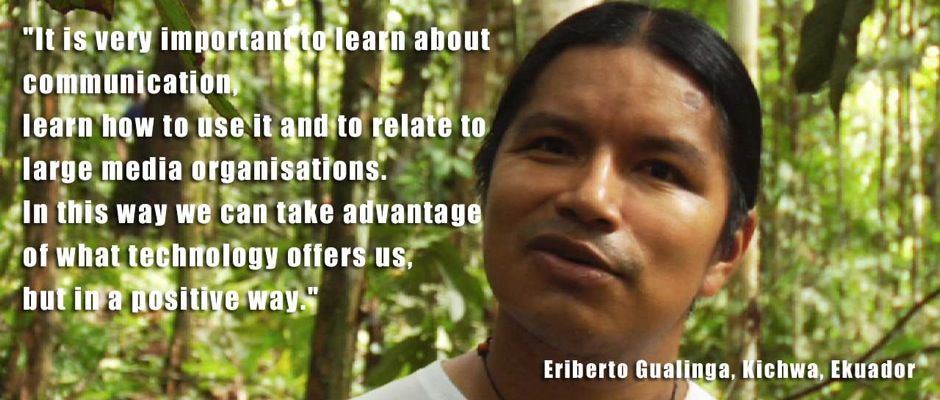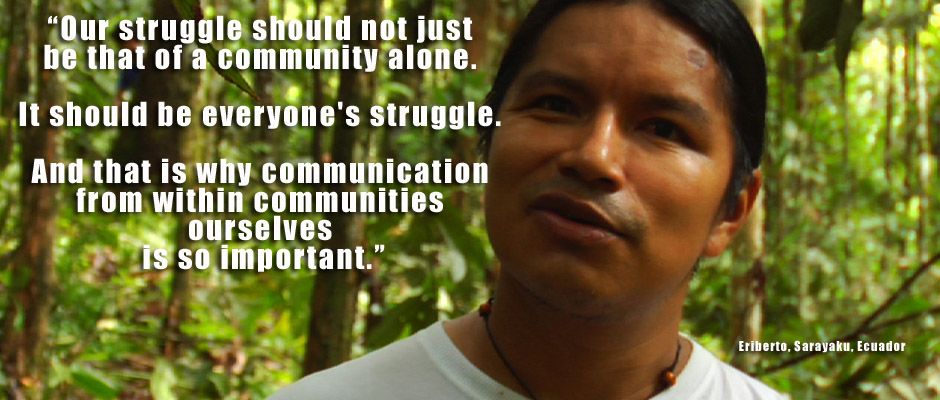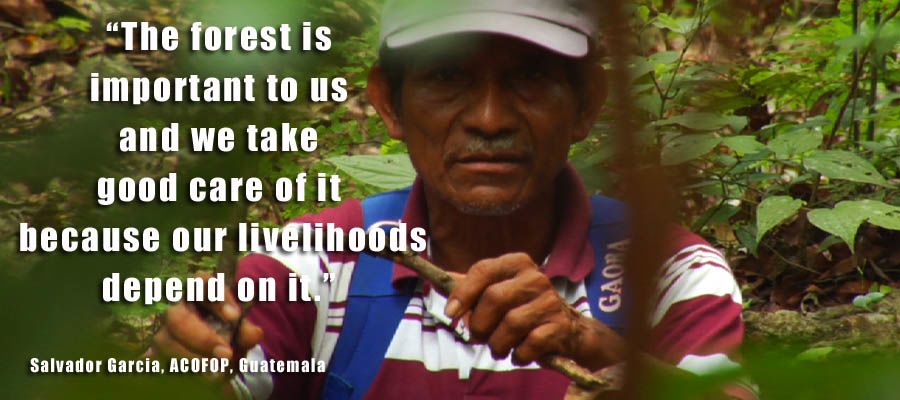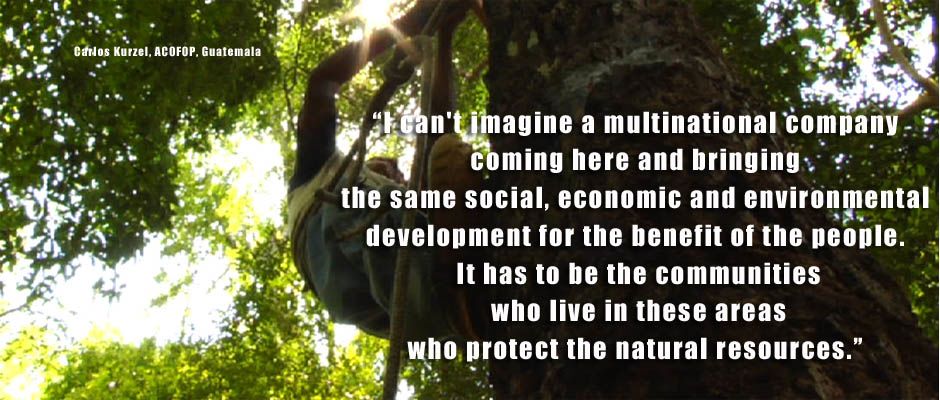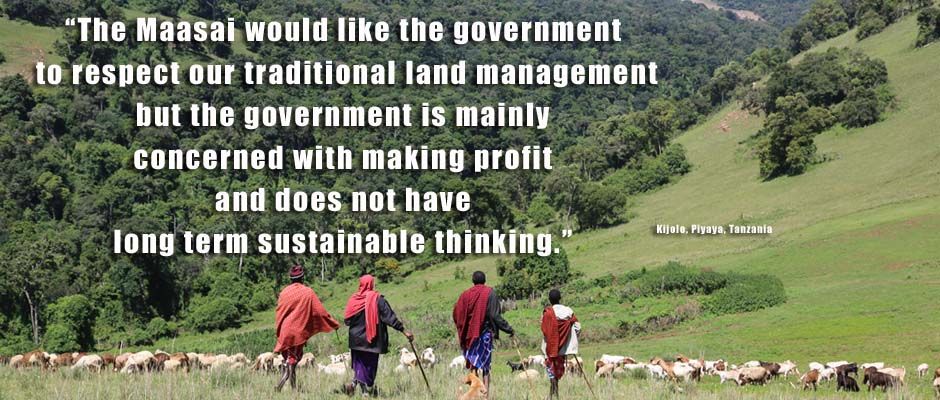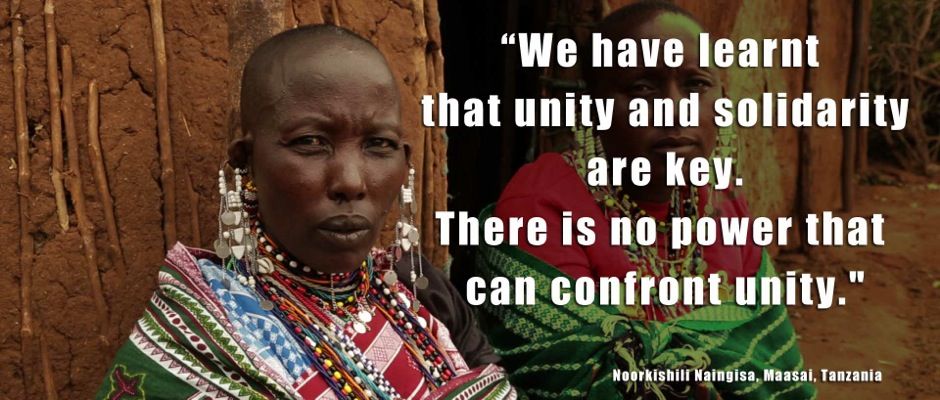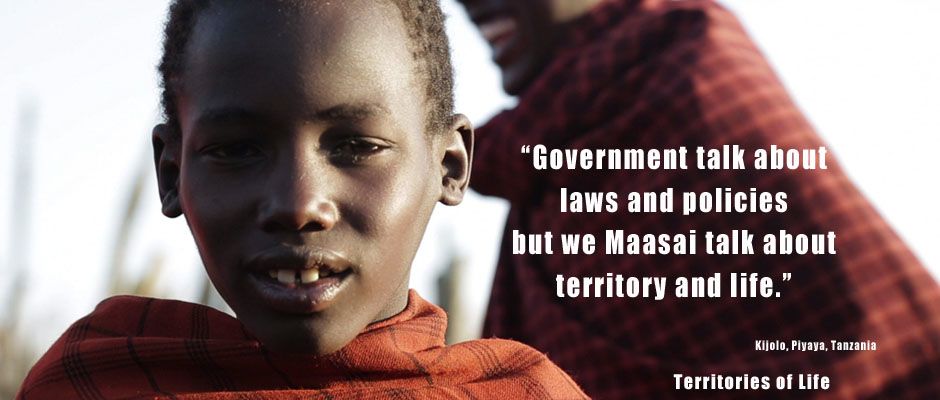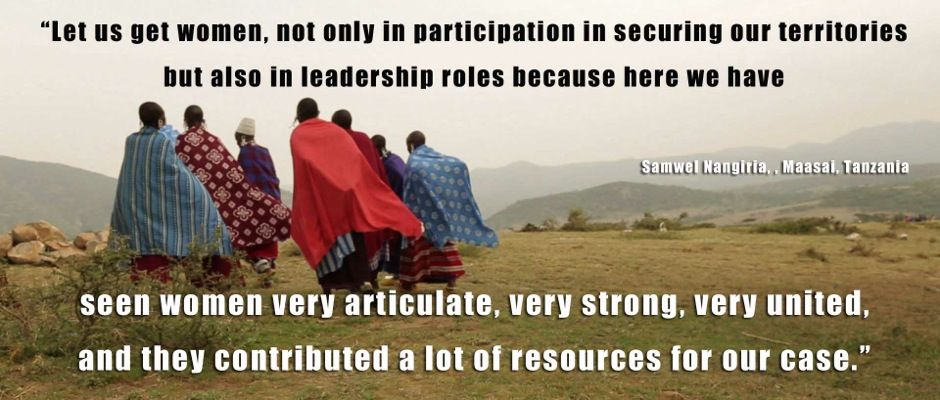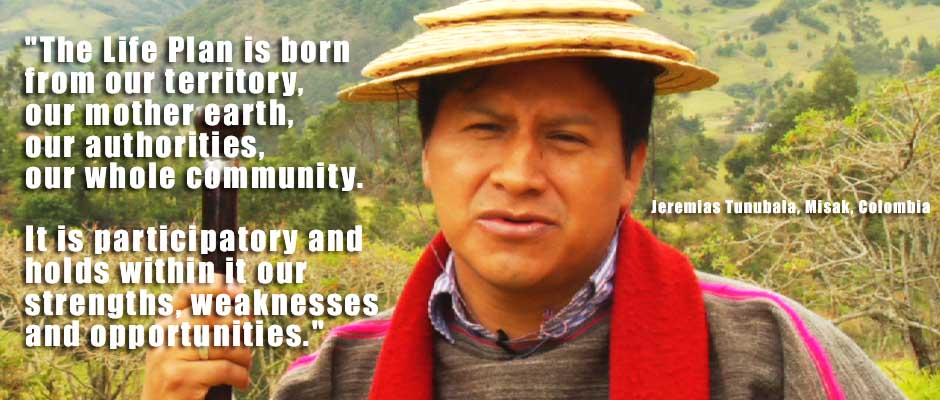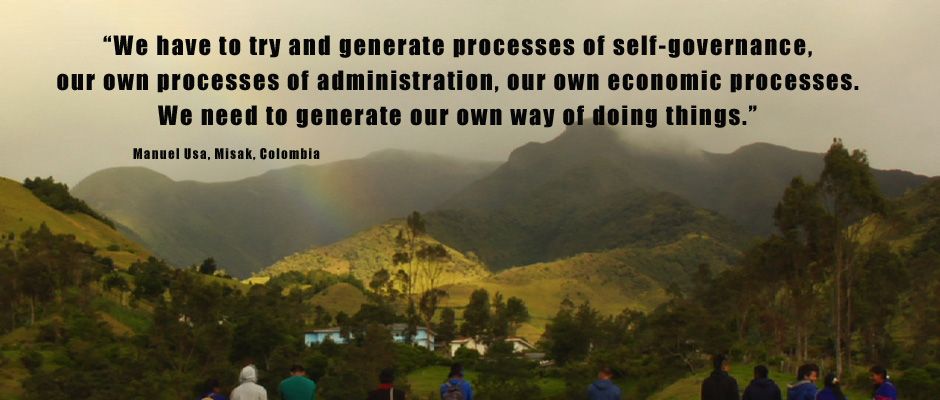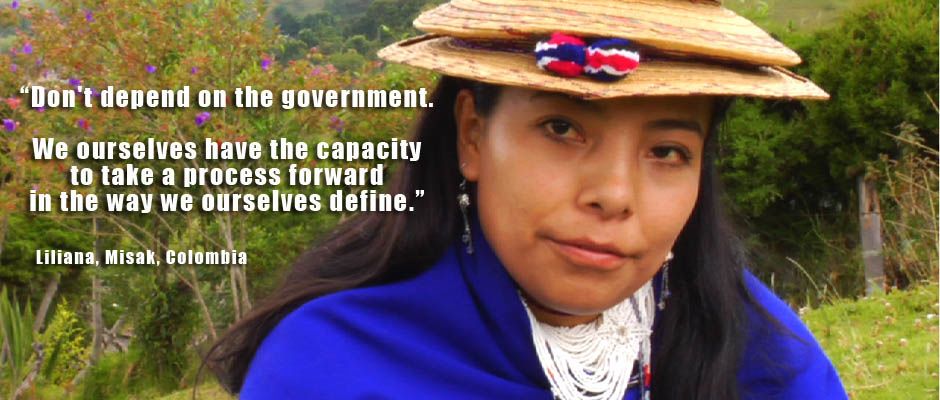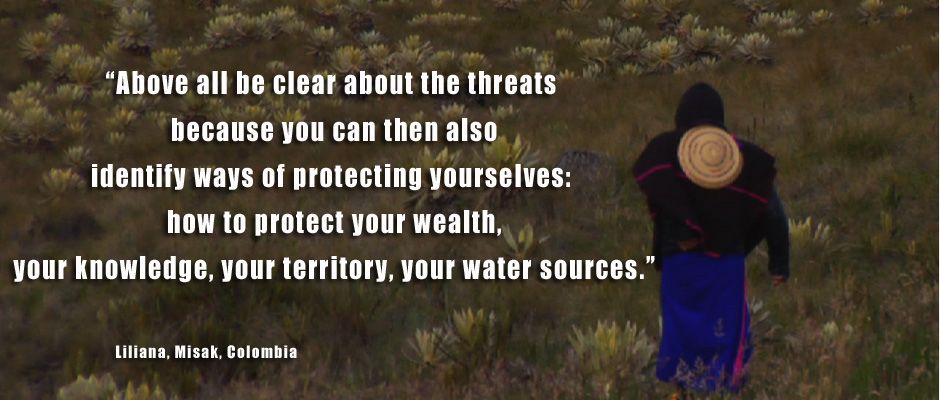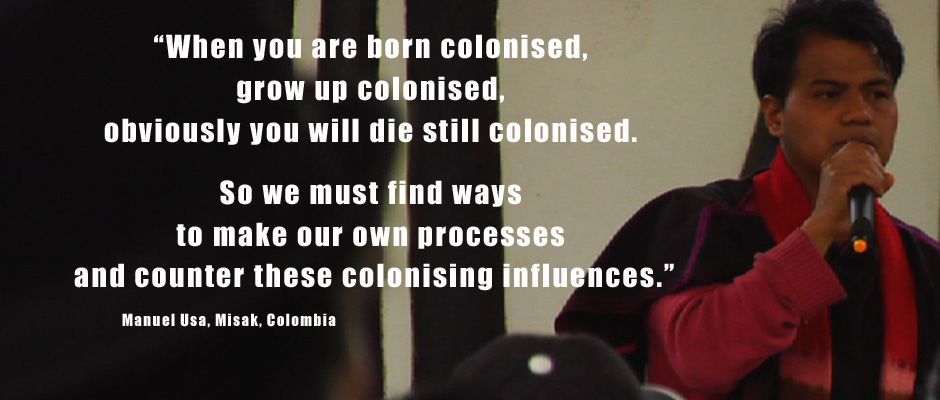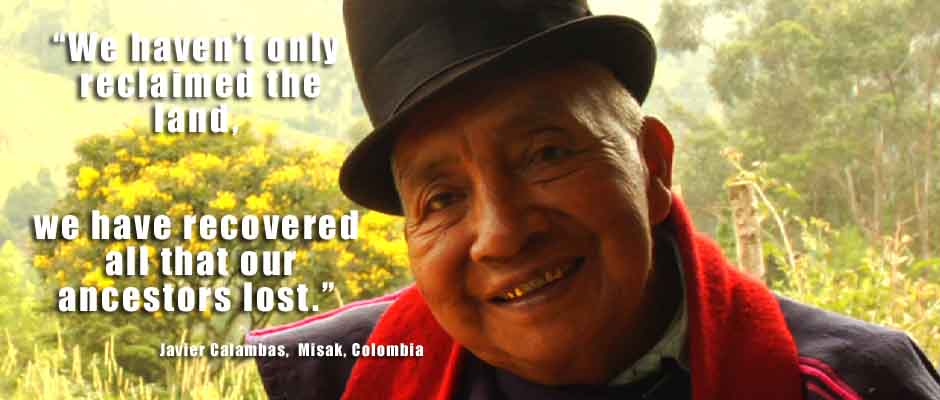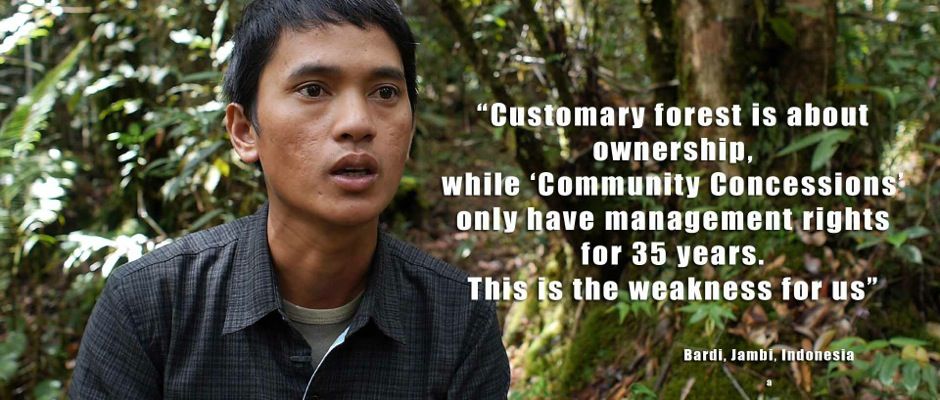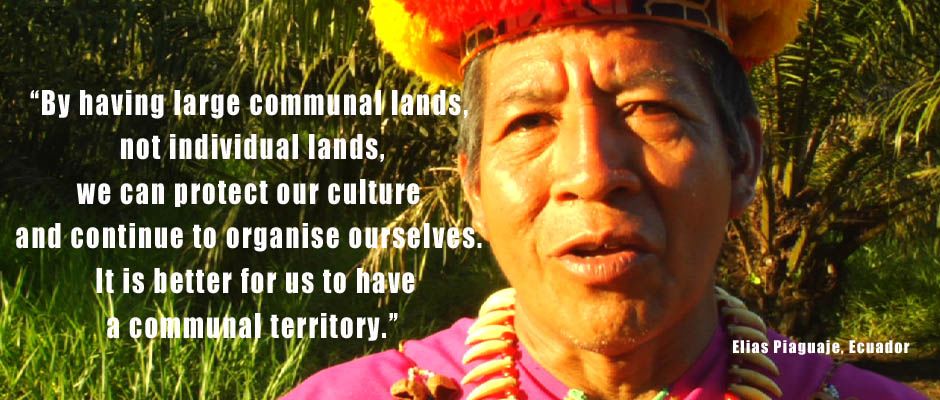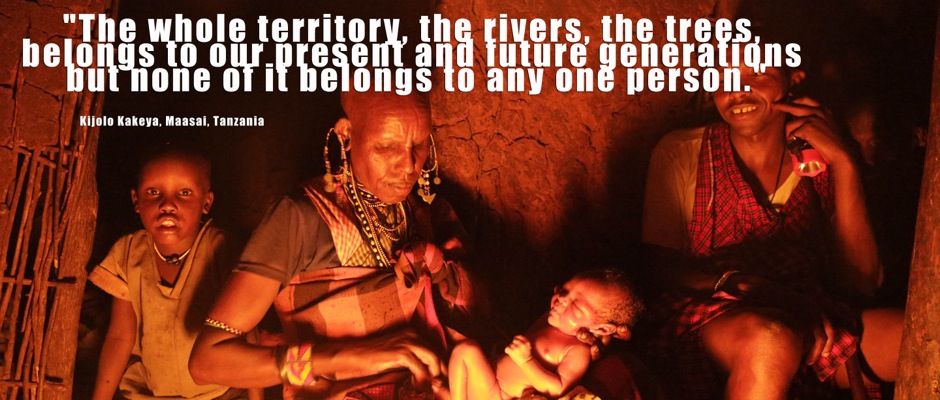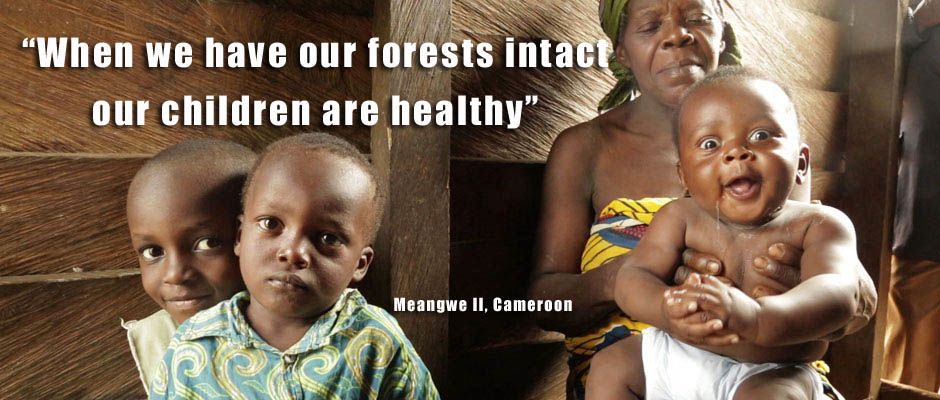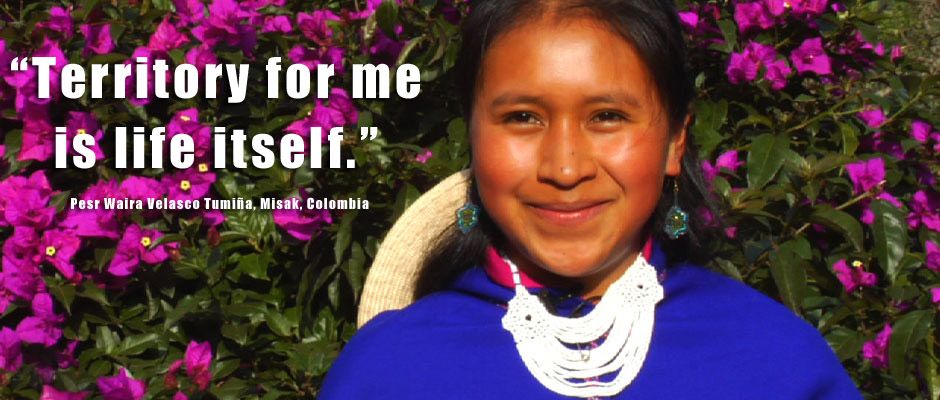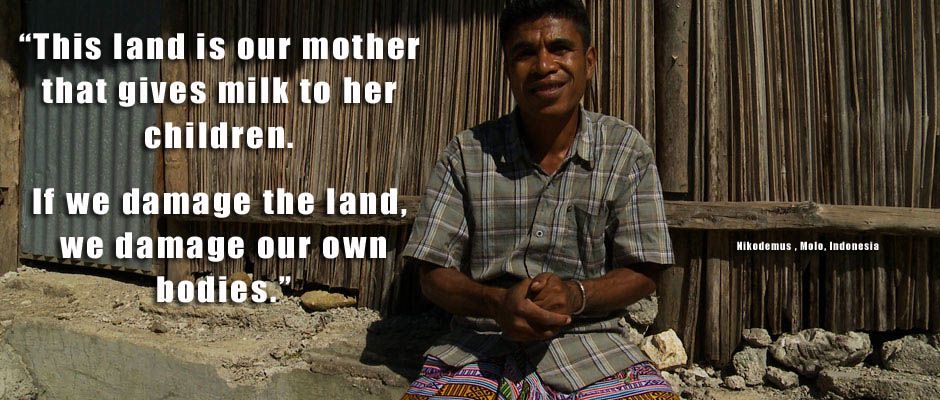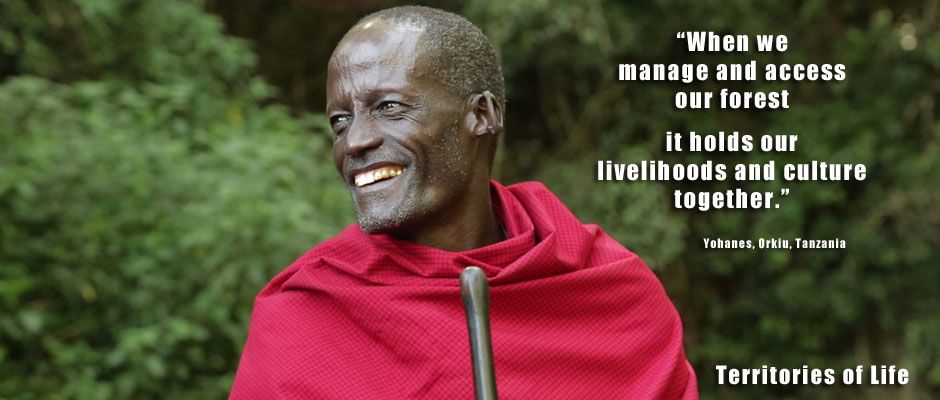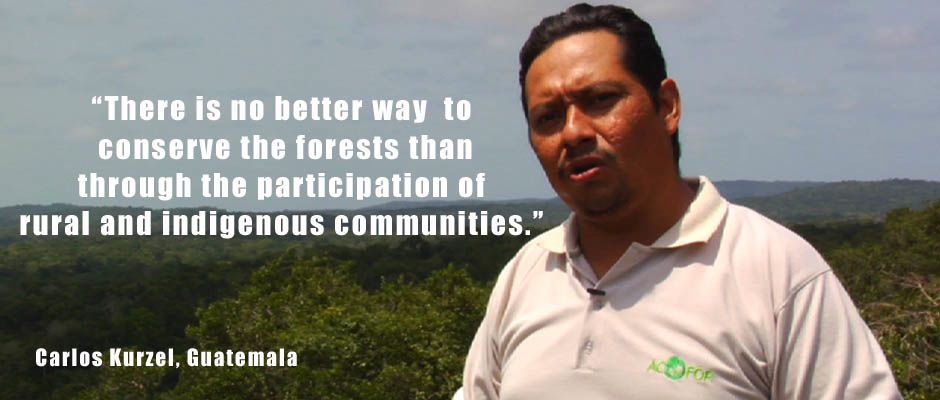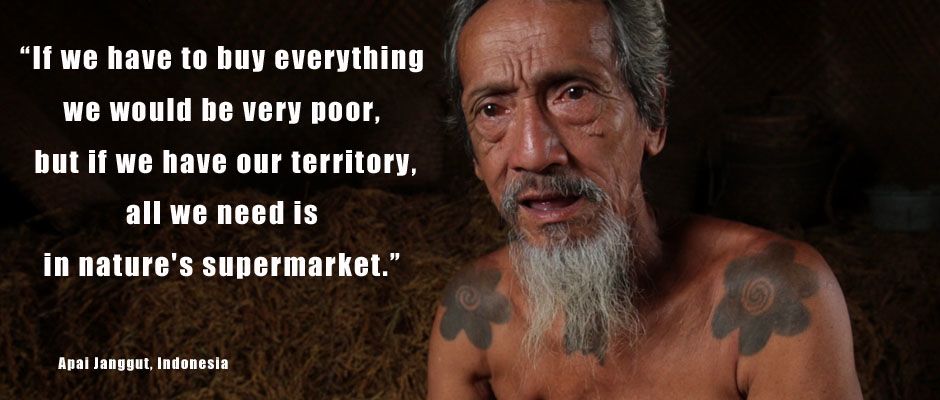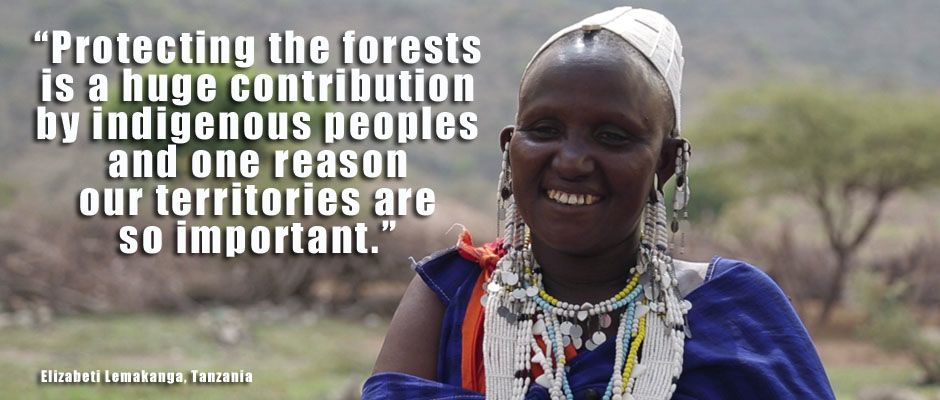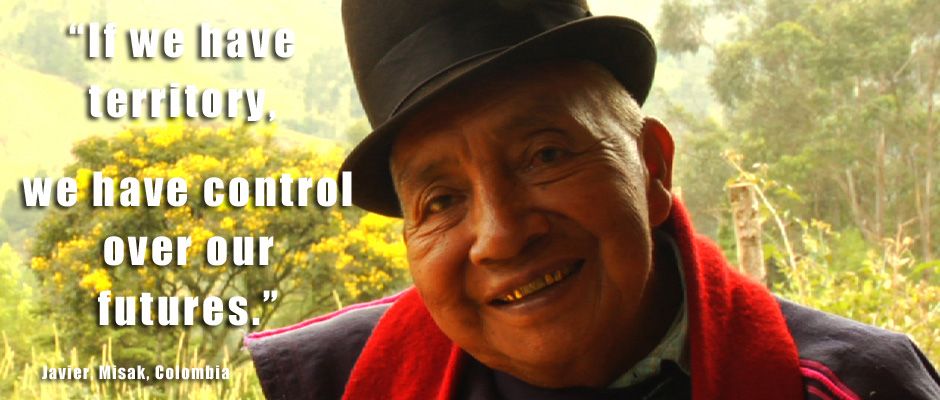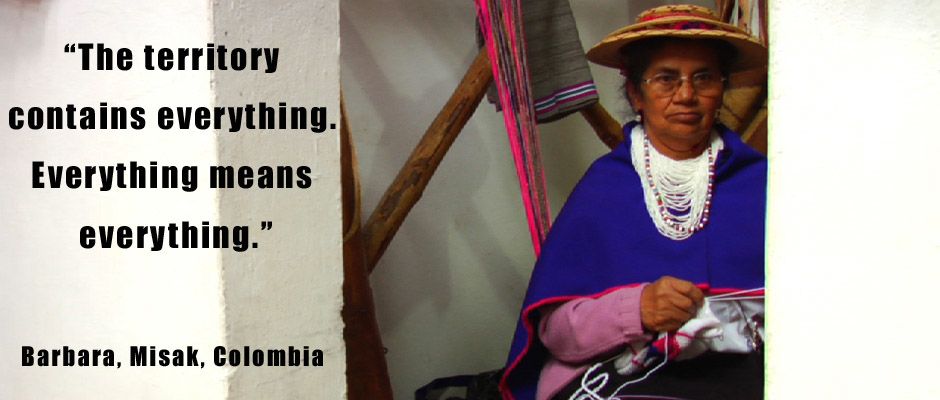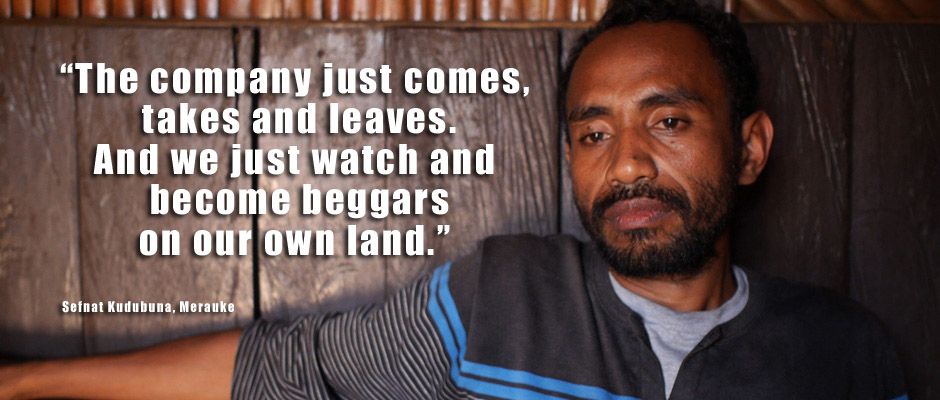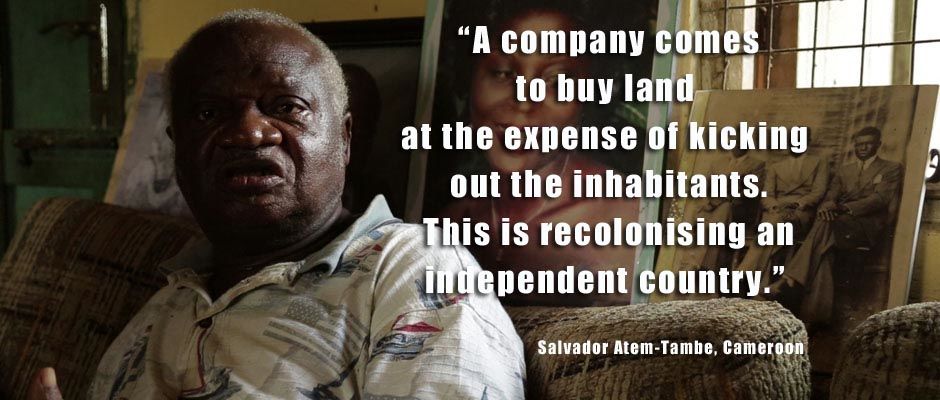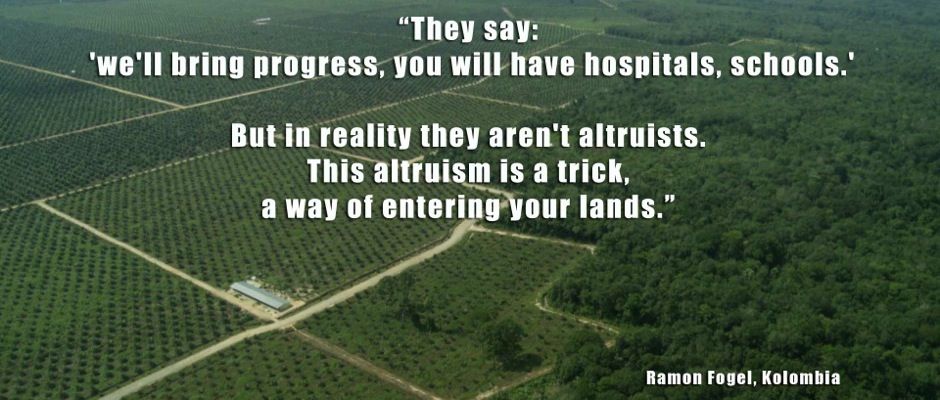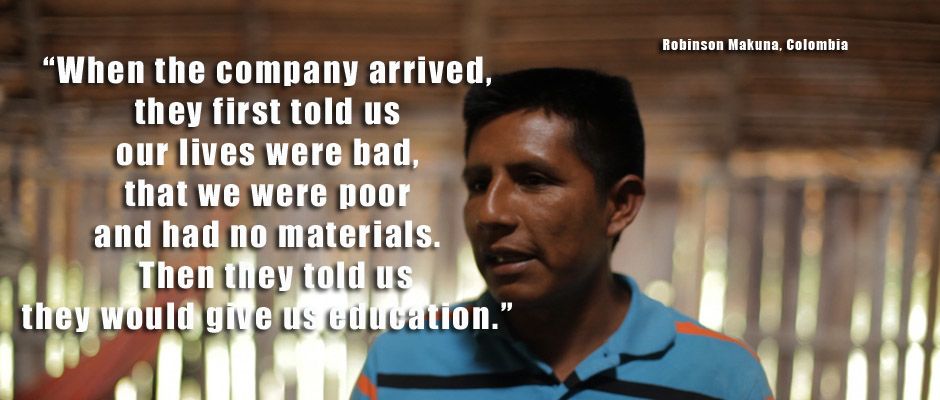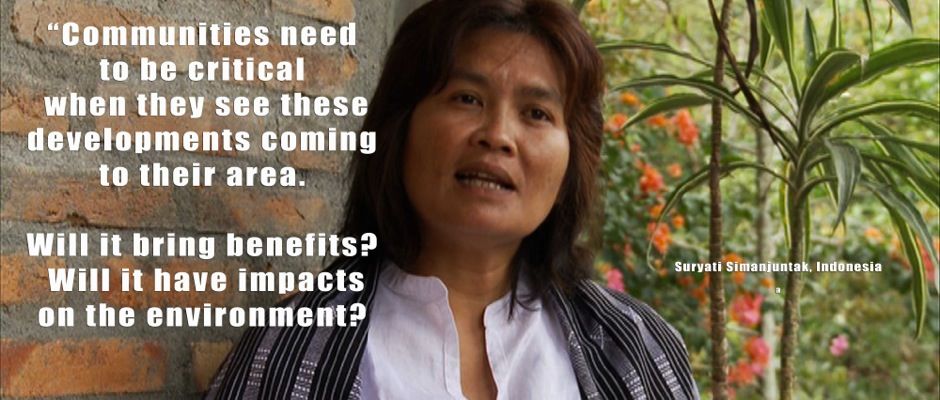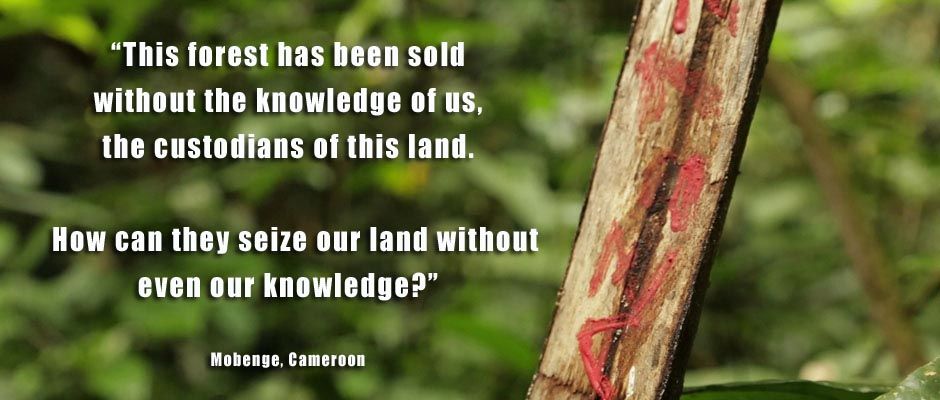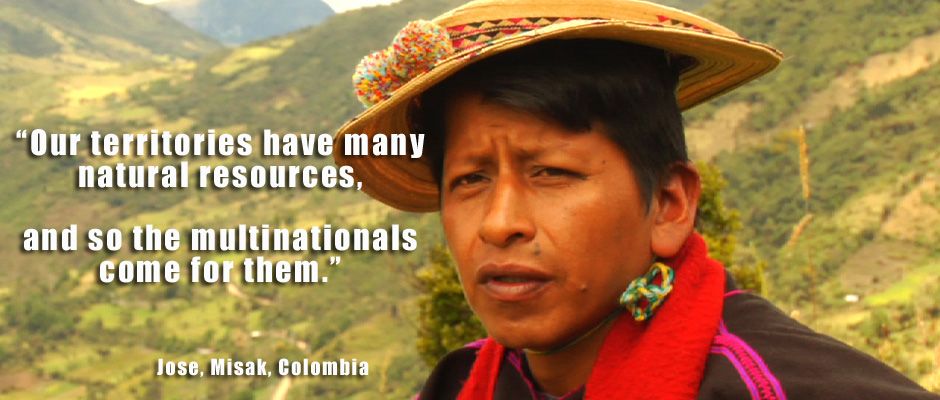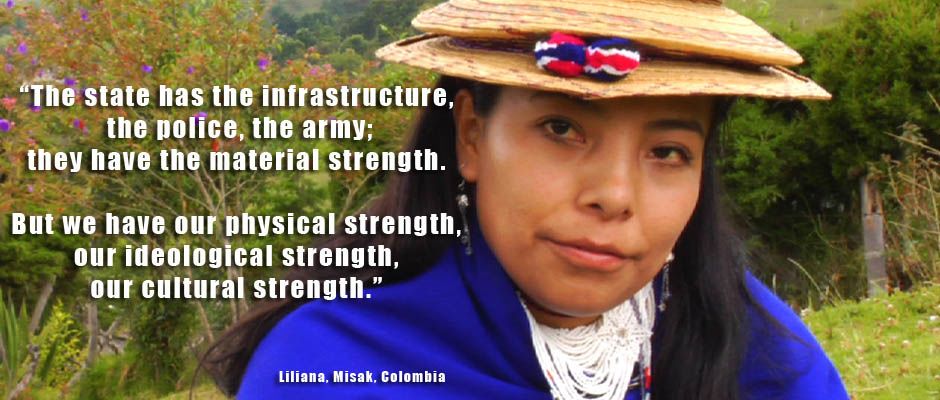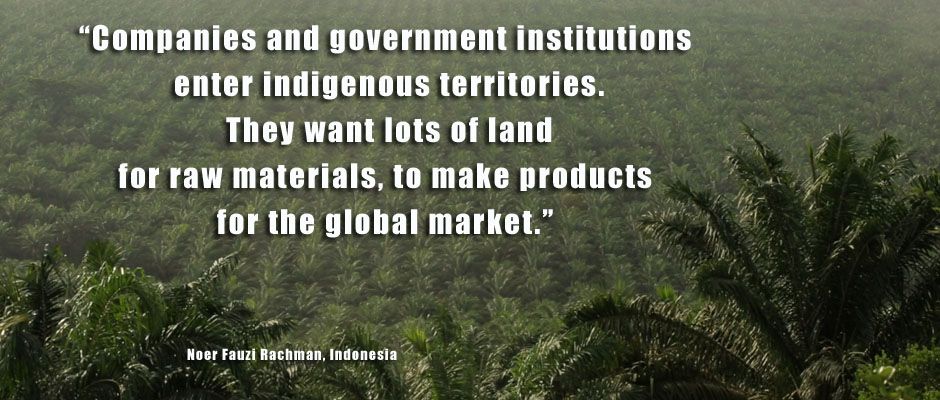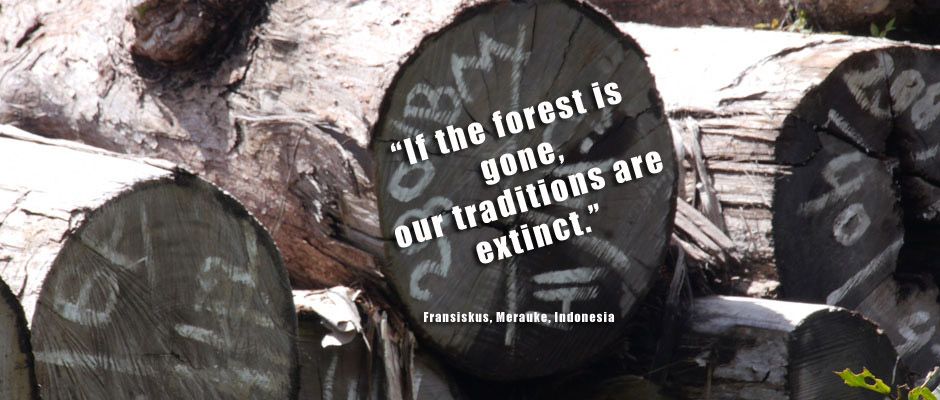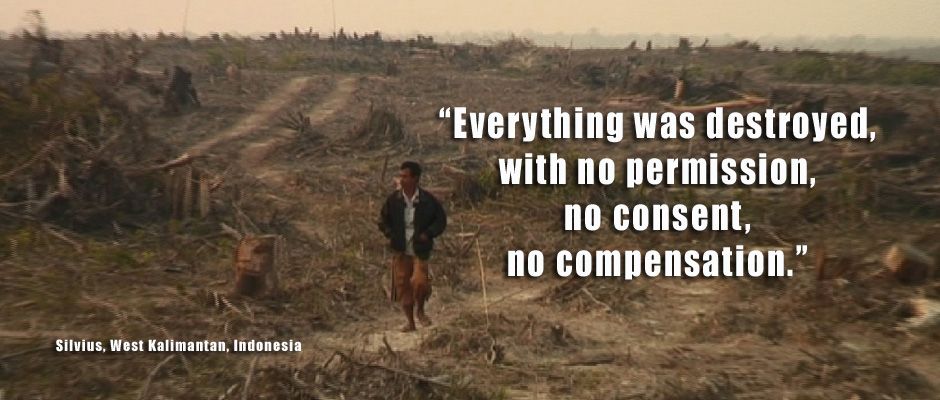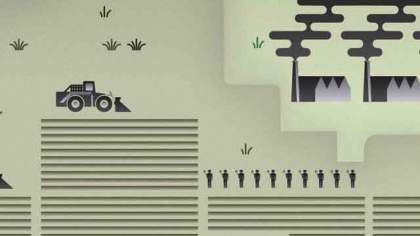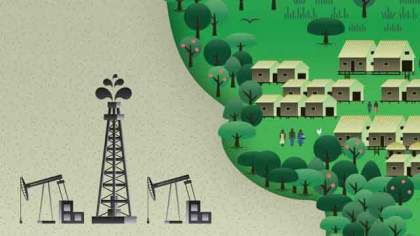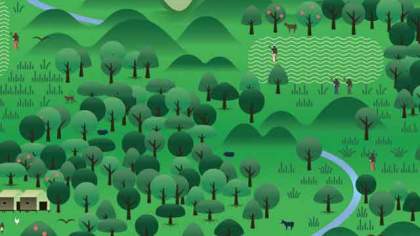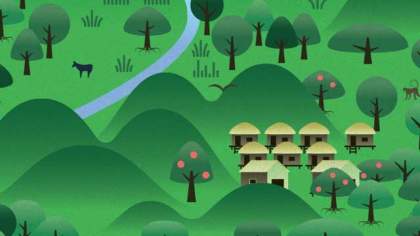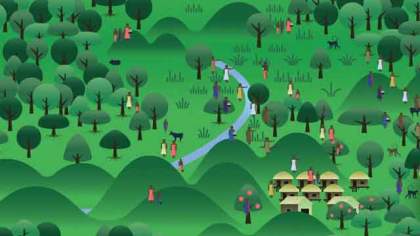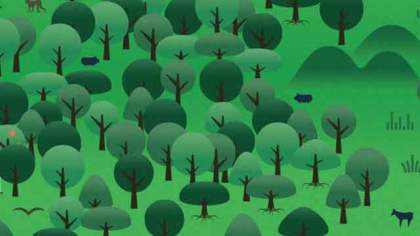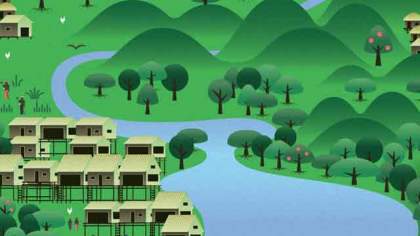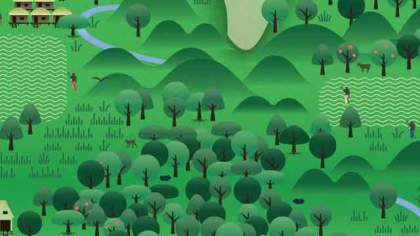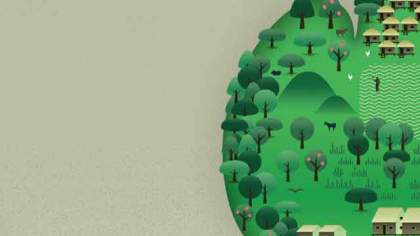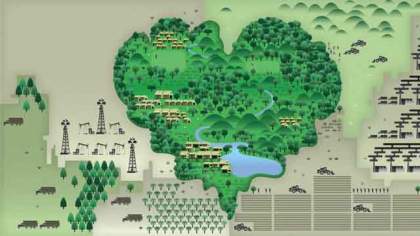-
-
-
-
Territories of Life News

LANÇAMENTO DO FILME BRASIL : Enfrentando a Extinção, Defendendo a Vida
Um filme que conta a história das ameaças à biodiversidade, a emergência climática e a rápida destruição da diversidade cultural: uma história interligada de perda que está ameaçando a existência humana no planeta.

Nemonte Nenquimo, a Waorani leader sends a strong message to the western world
"We Indigenous people are fighting to save the Amazon, but the whole planet is in trouble because you do not respect it." Nemonte Nenquimo: Published in The Guardian
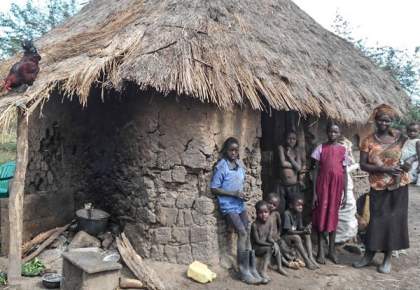
35,000 Ugandans left homeless as private firms share Kiryandongo land
The government says the contentious territory was empty space and unoccupied public land but residents claim they hold it under customary ownership. (Source: Daily Monitor)
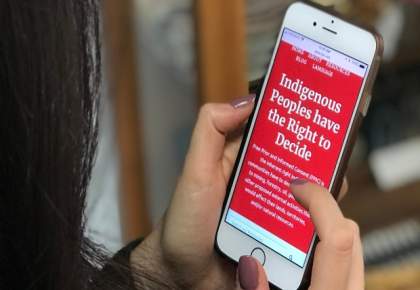
New website aims to put info about resources consent in Indigenous peoples’ pocket
Site hosted by Six Nations Polytechnic brings together info on free, prior and informed consent (Source: CBC News)

Territories of Life workshops with the Shawi people
In late February 2017 LifeMosaic and Peru Equidad facilitated a three-day workshop for Shawi community leaders in the village San Antonio, Loreto department, Peru.
LifeMosaic-CINEP workshop with Wiwa youth in Colombia
LifeMosaic and CINEP teamed up to bring our Territories of Life toolkit and workshops to youth from three Wiwa communities in the Sierra Nevada de Santa Marta.

Take Part in a Plan de Vida Workshop in Govan, Glasgow
We invite you to to take part in a unique two-day event joining Misak leader Jeremias Tunubala, The GalGael Trust and LifeMosaic in Govan, Glasgow. Open to all community members and practitioners engaged in community-led approaches, please sign up to attend on the 17th & 18th of November. We are also holding our ten year celebration at Galgael HQ after the Friday session - All welcome!
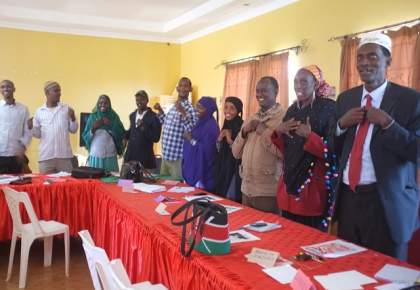
Teritories of Life Launch, Kenya
In June, LifeMosaic brought the Territories of Life toolkit to Kenya, in partnership with the Kivulini Trust and the Waso Trustland Project.
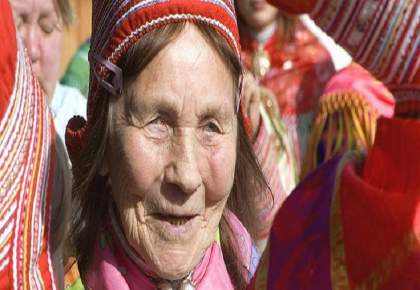
Dispossessing the Sámi Peoples
Indigenous Sami Leaders and arctic scientists call for urgent help from the international community as the Finnish government are about to pass the new Forestry Act, threatening the last old growth forests of Finnish Lapland and the reindeer herding homeland of the indigenous Sámi Peoples. (Kenrick / Bella Caledonia)
Territories of Life launched in Mexico
In February, LifeMosaic brought the Territories of Life toolkit to Yaqui and Rarámuri communities of North West Mexico, in partnership with the Christensen Foundation, La Marabunta Filmadora and Siné-Comunarr.

The refugee who took on the British government
For British politicians, foreign aid to Africa has become a cherished emblem of our idealism and generosity. But what happens when our funds harm those they are meant to help? (Rawlence / The Guardian)

Last few days to support our crowdfunder
Please help distribute Territories of Life to indigenous peoples across Africa, Latin America & South East Asia. Our crowdfunder ends on December 31st.
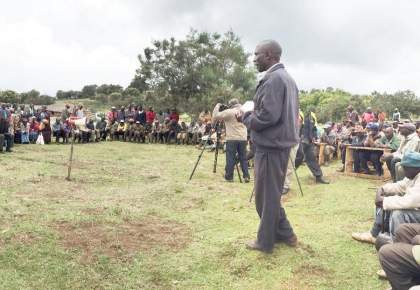
‘Community Lands’ Less About Saving The Past Than Securing The Future
Kenya’s new constitution provides for ‘community lands’. Group ranches and trust lands will be vested in communities. Liz Alden Wily asks, 'Is the constitution protecting old ways instead of leading us into the future?' (The Star)
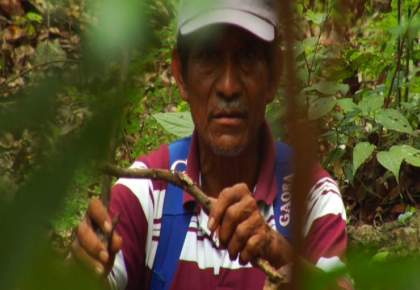
New Video: Half a Million Hectares of Hope launched
A new video looks at how Guatemalan communities sustainably manage half a million hectares of forests while developing their local economies.

New Video: Communications is launched
In this new video from the Territories of Life video toolkit, hear about communities that have used radio, video and other communication strategies to strengthen their struggles.
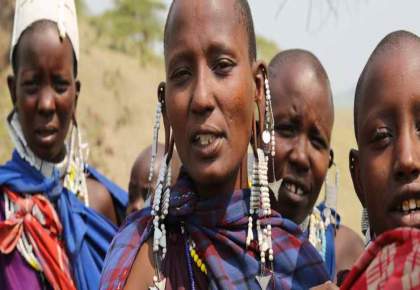
New Video: Women Champions of Buffalo River is launched
A new video from the Territories of Life video toolkit tells the story of how Maasai indigenous women in Tanzania used awareness raising, protests and political pressure to lead a movement in defense of their territory.

Land rights: “Our territory belongs to us and we belong to our territory”
LifeMosaic’s new video on “Land Rights” takes a look at three different types of land rights: community concessions on state land, individual land ownership and communal ownership of territory. It’s the fourth in LifeMosaic’s series “Territories of Life“ (Chris Lang / redd-monitor.org).

Company tactics: How corporations take community lands
This new video from LifeMosaic describes the tactics that companies use to convince communities to accept and support their projects. It’s the third in LifeMosaic’s series “Territories of Life“ (Chris Lang / redd-monitor.org).

Land Grabs: LifeMosaic’s second video in the series Territories of Life
A new video by LifeMosaic, part of the series “Territories of Life“, looks at the impacts of this enormous land grab on indigenous peoples around the world (Chris Lang / redd-monitor.org).

European Launch of the Territories of Life Video Toolkit and Talk on Plan de Vida
European Launch of the Tool Kit today, Wednesday September 30th, 12:00-13:30 At the 2015 International Conference Series to Scale-up Strategies for Securing Community Land and Resource Rights, Bern, Switzerland.

Territories of Life - Longhouse Screenings
Territories of Life is being screened as part of a three-week residential training with 27 young indigenous leaders from across Indonesia. The training, organised by AMAN / BPAN and LifeMosaic, is being held in a remote Dayak traditional longhouse in Kapuas Hulu, West Kalimantan, Indonesia

Honduras’ Garifuna communities resist eviction and theft of land
Along the Atlantic coast of Honduras, Garifuna communities are organizing to resist evictions and the dispossession of their territories by mega-tourism projects, narco-traffickers and the expansion of agricultural plantations (Jeff Abbott / wagingnonviolence.org).
Using the Law - Territories of Life
Learn from communities that have used national and international law to defend their rights.
-
What is 'Using the Law' about?
Learn from communities that have used national and international law to defend their rights.
This video looks at three legal cases in Indonesia, Tanzania and Paraguay using national, regional and international law. It also looks at the pros and cons of going to court.Length of Video
13 minutes.
Download 'Using the Law' here
Download Facilitators Guide here
Suggestions for Discussion Questions after Community Screenings
- What laws (district level, provincial, national) impact on your community, either negatively or positively? Does your country’s national constitution have articles that relate to the protection of indigenous communities?
- What international laws protect your community? (Such as UN Declaration on the Rights of Indigenous Peoples and the International Labour Organisation Convention No. 169). Has your country signed up to any international treaties that could be used to defend your land rights?
- What are the possible downsides of going to court? Are there any ways to avoid these negative impacts?
- Where can you go to get legal advice?
-
Documents and Downloads
Territories of Life - Facilitators Guide
This booklet is for community facilitators who are using the Territories of Life Video series. The booklet covers information about each video in the series as well as tips on hosting screenings, discussions and action planning sessions with communities.
The United Nations Declaration on the Rights of Indigenous Peoples
The Declaration on the Rights of Indigenous Peoples was adopted by the UN General Assembly in 2007 and is a key human rights instrument which indigenous peoples may use to ensure that their individual and collective rights are respected (United Nations 2008).
Learn and Exercise your rights: A simplified version of the UNDRIP
This booklet presents in a simple and illustrative manner, the collective rights of indigenous peoples as contained in the United Nations Declaration on the Rights of Indigenous Peoples (UNDRIP). It is intended as an educational tool for communities to understand indigenous peoples' rights and to know what they can do to promote and protect their rights (AIPP, IWGIA et al, 2013).
Training Manual on the UN Declaration on the Rights of Indigenous Peoples
This training manual is developed as a basic educational tool kit for the conduct of community trainings and seminars for raising awareness and generating advocacy of the United Nations Declaration on the Rights of Indigenous Peoples (UNDRIP). The manual contains an overview of the UNDRIP, modules on nine thematic areas and one module on practical advocacy skills (AIPP, 2010).
The Community Guide to the UN Declaration on the Rights of Indigenous Peoples
This guide is designed to assist Aboriginal and Torres Strait Islander people to learn about the United Nations Declaration on the Rights of Indigenous Peoples, though much of the information it contains may be useful for other indigenous peoples. It will help you to become familiar with the Declaration and to discover how the rights outlined in it can be used in everyday life. (Australian Human Rights Commission, 2010).
UN Declaration on the Rights of Indigenous Peoples on Free, Prior and Informed Consent Poster
A simplified version on the UN Declaration on the Rights of Indigenous Peoples (UNDRIP) on Free, Prior and Informed Consent (FPIC) produced by Asia Indigenous Peoples Pact (AIPP, 2012).
The Right to Self-Determination and Development of Indigenous Peoples
The world is becoming crowded, and there is a scramble for resources in the name of "sustainable development”. Pressure is being put upon indigenous peoples and on their land and resources that they have inherited from their ancestors and are obliged to pass it on to the next generation for their collective survival. This comic provides a simplified overview of the problems faced by indigenous peoples, their rights and their contributions to sustainable development based on their distinct lifestyles and values (AIPP, 2014).
Rights in Action: Free, Prior and Informed Consent (FPIC) for Indigenous Peoples Comic
Rights in Action: Free, Prior and Informed Consent (FPIC) for Indigenous Peoples is a comic book published by Asia Indigenous People Pact. It illustrates the importance and use of Free, Prior and Informed Consent as a mechanism and a process wherein indigenous peoples undertake their collective decision on matters that affect them, as an exercise of their right to their land, territories and resources, their right to self-determination and to cultural integrity (AIPP, 2013).
UN Declaration on Rights of Indigenous Peoples on Rights to Lands, Territories & Resources Poster
A poster which highlights key articles of the UN Declaration on the Rights of Indigenous Peoples on their rights to lands, territories and resources (Asia Indigenous Peoples Pact, 2012).
Indigenous & Tribal Peoples’ Rights In Practice: A guide to ILO Convention No. 169
In 1989, the International Labour Organization adopted the Indigenous and Tribal Peoples Convention (ILO Convention No. 169). Since then, the Convention has been ratified by 20 countries and has guided and inspired governments and indigenous peoples all over the world in their work to promote and protect indigenous peoples’ rights. Twenty years have passed since the adoption of the Convention. This Guide presents experiences, practices and lessons learned generated so far – thus providing a practical tool for the further understanding and implementation of indigenous peoples’ rights (ILO / Pro 169, 2009).
Other videos
Indigenous Peoples’ Rights to Self-Determination and Development
Who are indigenous peoples, what do they have to offer this world of ours? How are they being affected by the ever accelerating development of the world we live in? What are the safeguards that are being put in place that will help protect them and why should we need these safeguards to ensure that indigenous peoples are in control of their own destiny? Some of the answers to these questions can be found in this animation (Asia Indigenous Peoples Pact, 2014).
Rights in Action: Free, Prior and Informed Consent (FPIC) for Indigenous Peoples
This community-friendly animation video explains the concepts and mechanisms of Free, Prior and Informed Consent (FPIC) through a story of interaction between indigenous peoples and people requesting their consent for new development. Free, Prior and Informed Consent is a core principle of the United Nations Declaration on the Rights of Indigenous Peoples, to guide collective decision-making. FPIC is a continual process that involves mutual respect and meaningful participation of indigenous peoples in decision-making on matters affecting them. The video also includes a story about customary law in the United Nations Declaration on the Rights of Indigenous Peoples. (AIPP, 2013)
ILO 169
When tribal peoples lose their lands, their societies disintegrate and individuals often succumb to alcoholism and fatal diseases. The only international law that can secure tribal peoples’ land rights is the International Labour Organization Convention 169. ILO 169 recognizes and protects tribal peoples’ land ownership rights, and sets a series of minimum UN standards regarding consultation and consent. ILO 169 has been around since 1989, but only twenty-two countries have ratified it so far. At this rate, it will be another 170 years before every country has ratified the Convention. Every country that does so, strengthens its force, and gives tribal peoples a greater chance to survive and thrive (Survival International).
Related links
ILO Convention No. 169
The International Labour Organization's Convention No.169 is a legally binding international instrument open to ratification, which deals specifically with the rights of indigenous and tribal peoples.
The PRO 169 Training Tool Box on Indigenous Peoples’ Rights
PRO 169 is the Programme to Promote ILO Convention No. 169 on Indigenous and Tribal Peoples. It is located within the International Labour Standards Department of the ILO (available in English / Spanish / French).
Free, Prior and Informed Consent (FPIC) Initiative
Learn about the right of Indigenous Peoples to Free, Prior and Informed Consent (FPIC) in this innovative radio series, ready for broadcast across radio stations worldwide. Produced by Cultural Survivial.
Environmental Defender Law Centre
The Environmental Defender Law Center (EDLC) is a non-profit organization that works to protect the human rights of people in developing countries who are fighting to protect their environment.
Namati
Namati is an international organization that tests the potential of legal empowerment through innovative interventions and research. In particular, Namati's Community Land Protection Program supports communities to use national land laws to protect their customary and indigenous lands.Namati also hosts a growing Global Legal Empowerment Network of practitioners and supporters. Network members are active in every continent in the world, whereas Namati’s programs and research focus on exploring the potential of legal empowerment in specific countries, including Sierra Leone, India, Liberia, Mozambique, and Uganda.
ForestDefender
ForestDefender is an online legal database prepared and maintained by the Center for International Environmental Law. It presents a human rights-based approach for analyzing national policies against international standards by providing a snapshot of international human rights and obligations that are relevant in the context of forest governance.
Indian Law Resource Center
The Center provides legal assistance to indigenous peoples of the Americas to combat racism and oppression, to protect their lands and environment, to protect their cultures and ways of life, to achieve sustainable economic development and genuine self-government, and to realize their other human rights.
Earthrights International
EarthRights International (ERI) is a nongovernmental, nonprofit organization that combines the power of law and the power of people in defense of human rights and the environment, defined as "earth rights." ERI specializes in fact-finding, legal actions against perpetrators of earth rights abuses, training grassroots and community leaders, and advocacy campaigns. Through these strategies, ERI seeks to end earth rights abuses, to provide real solutions for real people, and to promote and protect human rights and the environment in the communities where they work.
Global Voices Special Coverage: Indigenous Rights
Special Coverage on Indigenous Rights by Global Voices includes a number of articles and blogs as well as an extensive resource lists
-
Using the Law News
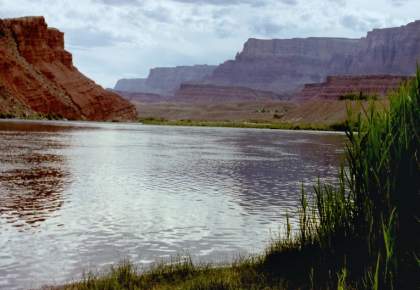
Environmental lawyers seek legal rights for the natural world
Rivers and other natural features have intrinsic rights and should own themselves, rather than being considered property (Source PRI)

‘We’d rather die than lose’: villagers in Indonesia fight for a land rights revolution
A small community on the island of Sumatra is at the heart of a battle for traditional territories that could finally resolve the muddled and exploitative system of laws governing land ownership in Indonesia. (Bevins / the Guardian)
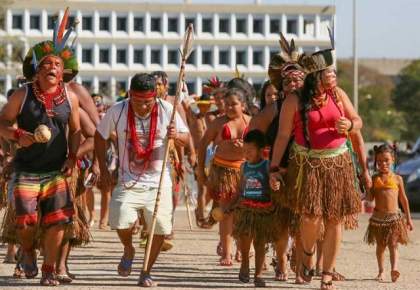
Brazil’s Indians on the march in last ditch effort to stop land theft
Brazilian Supreme Court rulings that will help determine the legality of the marco temporal are expected this Wednesday, 16 August. (Branford / Mongabay)

Brazil’s Temer threatens constitutional indigenous land rights
A storm of protest greeted the 19 July announcement that Brazilian President Michel Temer has approved a recommendation made by the Attorney General’s office (AGU), that federal government bodies should adopt new criteria for setting the boundaries of indigenous land. (Branford & Torres / Mongabay)
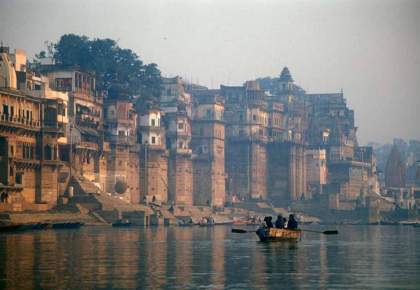
Rivers Get Human Rights: They Can Sue to Protect ThemselvesIn New Zealand and Ecuador, rivers with l
In New Zealand and Ecuador, rivers with legal aspects of “personhood” open up new environmental battles (By Mihnea Tanasescu - Scientific American)
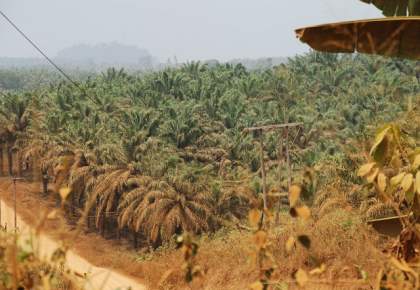
244 Cameroonian farmers bring SGSOC palm oil plantation to justice
Yaounde - Local communities affected by a large-scale palm oil plantation took their case to the Court of First Instance in Bangem, south-west Cameroon, with the first hearing set for 9 November. Greenpeace Africa, who documented the abuse made by the company for the last seven years, launches a call in support for the communities. (Greenpeace / Press Release)

The Community Land Act: Now it’s up to communities
At last Kenya has a Community Land Act. (By LIZ ALDEN WILY)
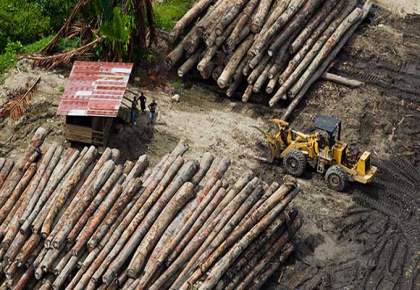
Landmark Court Decisions Return Land to Papua New Guineans
Communities in Papua New Guinea (PNG) are celebrating milestone victories against land grabbers. (Oakland Institute)
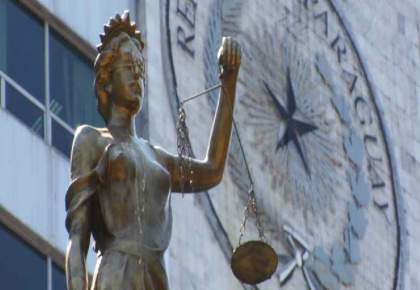
New Video: Using The Law is launched
In this new video from Territories of Life, learn from communities in Indonesia, Tanzania and Paraguay that have used national and international law to defend their rights.
Communications - Territories of Life
Hear about communities that have used radio, video and other communication strategies to strengthen their struggles.
-
What is 'Communications' about?
This video looks at the ways three communities in Indonesia, Tanzania and Ecuador are using radio, internet, mainstream national and international media and video to bring the stories of their struggles to both the wider world and their local areas.
Length of Video
12 minutes
Download 'Communications' here
Suggestions for Discussion Questions after community screenings
- What are the key messages that are important to share about your community?
- In what ways do you want to share information about your community to the wider world?
- In what ways does your community share information within your community? How can this be improved?
Suggestions for Follow-up Activities after community screenings
- Form a communications sub-group to research the options of developing a community-led communications strategy to help defend your territory and rights.
- What would you need to do to set up a community radio? Go away and do some research into community radios - there are probably a few near you. Look into what you would need to be able to set up one in your local area. What equipment would you need? What kinds of permission would you need and what are the costs involved?
- Would video be useful to you and your community? In groups, think about what story you feel would be important to tell about your community. How could you tell this story through video? What equipment would you need?
-
Documents and Downloads
How to do community radio: a primer for community radio operators
Several ways and means are possible to set up a community radio, organize it or compose its equipment. This primer builds on the experience of Tambuli (Tinig ng Aming Munting Bayan Upang Umunlad Ang Maliliit or the Voice of the Community) in the Philippines, which in the past ten years has grown from one community radio to a network of 25 stations. Often located in remote rural areas, these stations are “operated in the community, for the community, about the community and by the community” (L. Tabing/UNESCO, 2002).
Campaigning with Grassroots Comics
Many people think that comics are mainly for children. However, what we call ”Grassroots comics” is a powerful medium for ordinary people’s expression and reading. This manual explains how comics can help in establishing public participation and making a campaign. (Sharad Sharma / World Comics, 2009)
Wallposter Comics
Grassroots comics are different from the mainstream comics, these comics are made by common people themselves. These comics are photocopied and distributed to a limited area, which encourage local debate in the society. Grassroots Comics are inexpensive and method is not complicated, you just required a pen, paper and access to a copying machine to produce one. This guide explains step-by-step how to produce you own comic and use it to inspire community debate. (Sharad Sharma / World Comics)
Other videos
Voices Through Time
“Voices Through Time” documents how men, women and youth members of the Indigenous Communicators Network of Peru supported by CHIRAPAQ, use the radio as well as new information and communication technologies, as tools to take control of their representation in the media, preserve their cultures and identities, and defend and exercise their rights. In their own voices the women involved in this process explain to us the impact that communication has had on their communities and the importance self-expression has in their lives. The aspiration of the Network is to construct a national system of communication expressly from and for indigenous peoples (CHIRAPAQ / UNPFII, 2010.)
Related links
Intercontinental Cry
An online journal dedicated to news, films and reports on indigenous peoples around the world.
Indigenous Rights Radio
Indigenous Rights Radio uses the power of community radio to inform Indigenous communities of their rights. We envision a world in which Indigenous communities, equipped with knowledge of their rights, are empowered to protect their lands, languages, and cultures. Cultural Survival’s Indigenous radio producers gather stories from Indigenous Peoples around the world. In English, Spanish, and a growing array of Indigenous languages, we bring the voices of the native peoples of Australia, Asia, Africa, Europe, and the Americas into dynamic dialogue about the meaning of Indigenous Peoples’ rights, their common struggles, and their evolving and innovative solutions to the problems they face today (Cultural Survival).
Minority Voices Newsroom
The minority voices newsroom is an online multimedia library that allows people to upload, download and share their stories. Members of minorities and indigenous communities, and their advocates, are encouraged to upload first-hand accounts, interviews, reports, pictures, audio and video footage addressing issues of importance to them.
WITNESS Video Advocacy Training Guide
This WITNESS Video Advocacy Training Guide incorporates some of the best practices and lessons learned by WITNESS and its allies over the past 18 years. It was created to help human rights defenders and activists evaluate and plan how best to integrate video into their advocacy work and is full of useful tips on how to use visual media as a tool that will engage people to create change.
Global Voices Special Coverage: Indigenous Rights
Special Coverage on Indigenous Rights by Global Voices includes a number of articles and blogs as well as an extensive resource lists
Flattened Forests
Remote tribal communities in Papua have for the first time used digital video to tell the outside world about the impact uncontrolled logging is having on their traditional way of life. Training was provided by London-based Environmental Investigation Agency and Jakarta-based, Telapak. Providing financial incentives to developing countries to reduce deforestation will be high on the agenda at the Bali UN climate change conference (The Guardian, 2007).
GIMP - Free and Open Source Image Editor
GIMP is a freely distributed program for such tasks as photo retouching, image composition and image authoring.
Audacity
Audacity is free and open source software for recording and editing sound.
StoryMaker
StoryMaker is an open source app that enables you to produce and publish professional-grade news using an Android phone, as safely and securely as possible.
Voice Recorder
This free mobile phone app allows you to record all your audios into mp3.
Soundcloud
Soundcloud is an audio platform that enables you to upload, record, promote and share your originally-created sounds.
Periscope
Periscope lets you broadcast live video direct from your phone.
Video Editor
This app allows you to edit video on Android mobile phones.
WordPress
Create a free website or easily build a blog on WordPress.com.
Vision of the Jaguar - Territories of Life
The story of 20 indigenous youth from the Colombian Amazon coming together to discuss how to defend their territory at this time.
-
This video is coming soon. Join our mailing list to find out when new Territories of Life videos are released.
What is 'Vision of the Jaguar' about?
This is a story of 20 indigenous youth from the Yaigoje Apoparis reserve in the Colombian Amazon. The youth take part in a training to learn about their culture and explore how to get involved in defending their territory from a gold-mining corporation .
Length of Video
12 minutes.
Suggestions for Discussion Questions after community screenings
- What are the benefits / concerns of the communities' youth leaving the village and moving to the cities?
- In what ways do the youth in your community take part in issues of defending territory?
- What are the barriers to youth involvement in leadership in the community and how can these be overcome?
- What is the impact of Western ideas and culture on your community?
- What can you do as a community to ensure your culture is strengthened in the face of strong outside forces?
- How do young people become adults or leaders (ceremonies, rites of passage) in the community? Are these moments of transformation still practiced?
Suggestions for Follow-up Activities after community screenings
- Set up a youth training event, or a rite of passage from youth to adulthood.
- Organise dialogues between elders and youth to understand how the wisdom of the elders and the vigour of the youth can work together to protect the territory.
- Plan what your community can do to ensure there are opportunities for the youth in the village.
Half a Million Hectares of Hope - Territories of Life
Guatemalan communities sustainably manage half a million hectares of forests while developing their local economies.
-
What is 'Half a Million Hectares of Hope' about?
In the North East of Guatemala, amongst ancient Maya ruins and diverse tropical rainforest, lies one of the largest community-managed forests in the world. This video shares the good news story from ACOFOP in the Peten. It tells how indigenous and rural communities protect and sustainably manage 500,000 hectares of forests, while bringing a variety of economic and social benefits to local people.
Length of Video
12 minutes.
Background
The Association of Forest Communities of the Peten, known as ACOFOP, was set up by local communities in 1995. ACOFOP is a wholly community-led organisation that was born of the need to make the government of the time listen to the communities and realise that only by including the communities would it be possible to conserve the natural wealth of these forests.
Download 'Half a Million Hectares of Hope' here
Suggestions for Discussion Questions after community screenings
- How could your community cooperate to satisfy its needs without depending on large-scale development projects?
- What ideas does your community have for economic alternative development? (Timber, non-timber forest products, tourism, etc.). How could you take them forward?
- What practices, customary laws and knowledge do you have for the effective management and protection of your forests / territory?
- ACOFOP is a community-led organisation that represents the voices of the communities and lobbies for their best interests. Do you have any community-led organisations and how can they be strengthened?
Suggestions for Follow-up Activities after community screenings
- Think about your territory and community in terms of the strengths, weaknesses, opportunities and threats.
- Develop a strategy for alternative economic development of your community.
- Role-play activity: Imagine your community is campaigning to get a large, community-managed forest area like the one in this video. Prepare arguments to take to the government, showing the benefits which result when communities manage the land.
-
Documents and Downloads
The Palangka Raya Declaration on Deforestation and the Rights of Forest Peoples
"We, forest peoples, are being pushed to the limits of our endurance just to survive. Checking deforestation requires respect for our basic rights, which are the rights of all peoples and all human beings. Deforestation is unleashed when our rights are not protected and our lands and forests are taken over by industrial interests without our consent. The evidence is compelling that when our peoples’ rights are secured then deforestation can be halted and even reversed. We call for a change in policy to put rights and justice at the centre of deforestation efforts. The world cannot afford further delays." (The Palangka Raya Declaration, 2014)
Revealing the Hidden: Indigenous Perspectives on Deforestation in the Peruvian Amazon
The report, Revealing the Hidden: Indigenous Perspectives on Deforestation in the Peruvian Amazon was compiled by Peru’s national indigenous peoples’ organisation (AIDESEP) and international human rights organisation, Forest Peoples Programme (FPP) and is based on the analysis and perspectives of Peru’s indigenous leaders and organisations whose lives, lands and livelihoods are threatened by deforestation on a daily basis. (AIDESEP, 2014)
Other videos
CBFM Local Solution to Global Challenges
The video “Community Based Forest Management: Local Solutions to Global Challenges”expounds on the important role of community based forest management in indigenous peoples’ livelihood and food security; spiritual and cultural values; and climate change mitigation. The video focuses on the land use system of Lua (La-weu) indigenous peoples including sustainable practice of shifting cultivation in northern Thailand; and the challenges faced by the Bhagpani and Sitalupakha Women’s Community Forestry User Groups on forest management in Nepal. (The Asia Indigenous Peoples Pact / International Work Group for Indigenous Affairs / Indigenous Peoples’ Foundation for Education and Environment, 2014)
A Forest for Life. Forest management in Emberá Wounaan
A Forest for Life. Forest Management in the Embera Wounan Territory presents the achievements of this territory in the Panamanian Darien in the sustainable management of its natural resources. The video illustrates the progress and achievements of indigenous forest management through interviews with community leaders. Despite this progress, however, these Indigenous Peoples face a series of challenges in consolidating the sustainable management of their resources, including external pressures that threaten their territories, as well as regulatory and logistical obstacles. The experience demonstrates the capacity and potential for Indigenous Peoples as central actors in sustainable forest management and development based on their own cosmovision. (Alba Sud, 2013)
The Forbidden Forests of the Dayak, Borneo, Indonesia
Deep in the remaining old growth forests of Borneo, the Setulang Dayak village guards its forest with deep commitment. To date, the village's traditional law of Tana Olen (forbidden forest), withstands increasing pressure from encroaching logging industries. Now as rapid development rolls in, the village is trying to secure sustainable and forest-friendly future, including an eco-tourism venture and carbon credits (UNU-IAS, 2010).
Indigenous Peoples: The Guardian of Indonesian Forest
From Papua to Sumatra, representatives of indigenous peoples agree on the importance of forests. They have proven themselves to be the faithful guardians of Indonesian forests. From Papua to Sumatra, communities are facing similar troubles in the destruction of their forests: large-scale oil palm, plantation forest, and mining concessions. Can Indonesia’s indigenous communities protect more than 15 million hectares of currently pristine customary forests? To save lives, biodiversity, and global climate. This film urges everyone to think clearly, especially to the Indonesian government to place their complete trust in these communities to sustainably manage forests. (Telapak / Gekko Studio, 2011)
Fever: Resilience (English)
Resilience is the ability to cope and recover from abrupt change. Indigenous peoples who are organised, confident to adjust their systems to changing circumstances, while maintaining their identity strong, will be better able to withstand shocks caused by climate change. The film shows 5 examples of this: cultural resilience; traditional forest management; strengthening customary law to live within the limits of the environment; maintaining seed diversity; and adapting traditional systems to cope with water scarcity. (LifeMosaic, 2010)
Women Champions of Buffalo River - Territories of Life
Maasai indigenous women in Tanzania used awareness raising, protests and political pressure to lead a movement in defense of their territory.
-
What is 'Women Champions of Buffalo River' about?
This video is about a powerful women-led movement for indigenous land rights, from Loliondo, Tanzania. Without the community’s consent a large part of their lands were occupied. When the women in the community realised that the efforts to defend their territory were failing, they decided to take matters into their own hands. The women used awareness-raising, protests and political pressure to lead a movement in defence of their territory.
Length of Video
15 minutes.
Download 'Women Champions of Buffalo River' here
Watch in Swahili, Spanish, French, Indonesian
Suggestions for Discussion Questions after community screenings
- What does leadership mean to you? What is the role of women in leadership roles in your community?
- Do the women in your community take a central role in defending territory? If not, what are the barriers to women's involvement and how can these be overcome?
- In this story, the women carried out awareness raising to build the confidence of other women to participate in defending the territory. What topics could this awareness raising cover in your community?
- In this story, the women used a variety of strategies (protests, political pressure, mass media, legal system, etc.) to defend their territory. What strategies are possible in your situation and how could you plan them and implement them?
- The women in this story talk about unity being the key to a successful struggle. How can you encourage unity in your community? (For instance, through awareness raising, music and songs, communal work, encouraging participation by all, etc.).
- The communities in this story felt ownership of their struggle and this helped it to be sustainable. What can your community do to help develop a feeling of ownership? (For example, financial contributions, participation, etc.).
Suggestions for Follow-up Activities after community screenings
- Set up a women's group to plan and take forward awareness raising in the community.
- Look for openings for women's representation in village councils, land discussions, local politics etc.
-
Documents and Downloads
Loosing the Serengeti
Report by the Oakland Institute which outline the land conflict in Loliondo, Tanzania where hundreds of Maasai homes have been burned and tens of thousands of people driven from ancestral land in Loliondo in the Ngorongoro district in recent years to benefit high-end tourists and a Middle Eastern royal family.
Realizing Indigenous Women’s Rights: A Handbook on the CEDAW
This handbook is an introduction to the human rights of indigenous women. It provides details on the Convention on the Elimination of All Forms of Discrimination Against Women (CEDAW) as the only instrument specifically for women. It also provides a brief overview of the other available human rights mechanisms (Tebtebba, the Asian Indigenous Women's Network & Forest Peoples Programme, 2013).
Toolkit on the Inter-American human rights system for indigenous women Pt.1
In order for the Inter-American human rights system to adequately recognise, protect and fulfil the human rights of indigenous women, it is necessary for indigenous women to engage with the system, to make their voices heard and to tell their stories with all their complexities. This toolkit, which contains a series of information notes explaining different aspects of the Inter-American system, is designed to help indigenous women and their advocates to use the system effectively (Andrea Galindo, Ellen-Rose Kambel & Valérie Couillard (FPP), 2015).
Toolkit on the Inter-American human rights system for indigenous women Pt.2
In order for the Inter-American human rights system to adequately recognise, protect and fulfil the human rights of indigenous women, it is necessary for indigenous women to engage with the system, to make their voices heard and to tell their stories with all their complexities. This toolkit, which contains a series of information notes explaining different aspects of the Inter-American system, is designed to help indigenous women and their advocates to use the system effectively (Andrea Galindo, Ellen-Rose Kambel & Valérie Couillard (FPP), 2015).
Indigenous Women of the Americas: guidelines to confront situations of multiple discrimination
'Indigenous Women of the Americas - Methodological and conceptual guidelines to confront situations of multiple discrimination' presents guidelines for working with indigenous women, which were collectively created from experiences in Canada, Mexico, Colombia and Argentina. We hope that our efforts will contribute to the building of a detailed methodology to deal with discrimination against Indigenous Women both when bringing cases to justice and when conducting research (Multiple NGOs, 2014).
HerStory of Empowerment, Leadership and Justice
HerStory of Empowerment, Leadership and Justice is a result of the tireless dedication of the Asia Indigenous Peoples Pact (AIPP)'s partners from indigenous communities in the Philippines, Northeast India, Mainland India, and Nepal. This publication is a reflection of the hard work of everyone involved in the Empowering Indigenous Women in Traditional Customary Institutions project, especially the women in the communities AIPP have been engaging with over the past three years. Here, 18 of these women have bravely shared their stories to empower and promote the solidarity of all indigenous women (AIPP, 2014).
Other videos
The Land Question
Loliondo Land Conflict - Tanzania - Land, it's been said, is the only thing worth working for, fighting for and dying for - because it's the only thing that lasts. That said, across Africa people remain dispossessed of their land, with governing parties seemingly more interested in talking about it than returning it.
Message from the Maasai
The Maasai from Tanzania are one of Africa’s oldest tribes. The Tanzanian government has just announced that it plans to evict thousands of Maasai families from their lands so that wealthy tourists can use them for elite hunting safaris. This is a video message from the Maasai to request global solidarity for their struggle to protect their territory and culture. (LifeMosaic / NGOnet)
Speaking out: Indigenous women leaders in Peru
In this video, Nery Zapata speaks about the difficulties of being a woman from a minority group in Atalaya, leading the indigenous local organization. As President of CORPIAA and Coordinator of the Veeduría, she has an important role. Reaching and remaining in her position has required self-confidence and determination, as is evidenced from her words. The video also features Patricia Cachique, an indigenous leader from the native community Boca Apinihua. Patricia emphasizes the importance of training women as well as men in issues related to forest management and climate change, and points out the importance of shared knowledge between women and men if there is to be shared decision-making (Helvetas Perú, 2015).
Indigenous Women’s Rights
We live in a time when public opinion is demanding a fairer and more equitable planet. There is no more important element to address this than the equality of men and women. This 4-minute animation video outlines the recommendations from CEDAW (Convention for the Elimination of Discrimination Against Women) and UNDRIP (UN Declaration on the Rights of Indigenous Peoples) particularly on indigenous women that guide and help us to move in this direction. (AIPP, 2013)
Fever: Organisation (English)
Part 3: Organisation gives examples of organisational tools and strategies used by indigenous peoples to protect their cultures, territories and rights. The film covers: awareness raising; organisational tools; networks and communication; petitions; legal cases and international law; unity, life plan; spirituality; movements. (LifeMosaic, 2010)
Community Organising in Plantations
This is part 2 of a 2 part film about industrial timber plantations (HTI) in Indonesia. The film is designed to be used by local facilitators and communities whose lands are in or near existing HTI permit areas, or in areas where new permits for mills or HTI plantations will be allocated. This film looks at strategies and tactics that communities are using to defend their rights when facing Industrial Tree Plantations. There are many examples where communities have been successful in getting what they want for the future of their land. Some communities may want to negotiate with the company specifying which areas of community land the company can use, and which areas it must leave alone. Other communties may chose to refuse mills or plantations on their lands altogether, and others may wish to regain their lands from a HTI concession that is already established. For any of these situations it is essential that a community is well organised, well informed and united in order to make wise decisions and effective strategies for their futures. (LifeMosaic, 2012)
Related links
Toolkit on Indigenous Women’s Rights in Africa
Forest Peoples Programme has created this toolkit, comprising 11 information notes, to help indigenous women in Africa to better understand the African human rights system and how to use it effectively to secure their rights (FPP, 2015).
Pastoral Women’s Council (Tanzania)
The Pastoral Women's Council is a community-based organisation which works with pastoralist and agro-pastorialist women in the Ngorongoro and Longido Districts of the Arusha region, in north-eastern Tanzania. PWC's website contains a wealth of information, links and publications related to their work and the situation of pastoralists in northern Tanzania more generally.
The Ecotourism Industry Is Saving Tanzania’s Animals and Threatening Its Indigenous People
In-depth reporting into the Loliondo land conflict affecting the livelihoods of pastoralists in northern Tanzania by Jean Friedman-Rudovsky. Originally published on May 12, 2015 (Vice News).
-
The loss of ancestral lands disproportionally affect women: gathering firewood, growing crops and subsidising family income by selling surplus products. Despite a deep connection to the land, women are rarely part of decision making processes surrounding land deals. When communities are displaced from the land, women may fall prey to human trafficking and prostitution, and face multiple levels of discrimination.
‘Women are generally the primary custodians of seed diversity and wild biodiversity, and therefore play a critical role in maintaining the health and resilience of the local ecosystems. When they are marginalised, this knowledge and the role they play is also undermined’ (Gaia Foundation, 2014, p.32).
IIED estimates that 70% of global land grabs are concentrated in Sub-Saharan Africa. In Tanzania for example, over 4 million hectares of land have been requested by foreign investors for both agrofuel and food production. Pastoralists and hunter-gatherers communities have suffered extensively in terms of socio-economic, cultural and political rights due to policies that systematically marginalise them.
In the United Republic of Tanzania, five years after a major titling effort had begun, pastoralists reported their eviction from multiple common grazing areas and were under threat of losing other grazing lands because those lands had been classified as “unused” (from “UN Access to Land and Land Rights”).
-
Women Champions of Buffalo River News
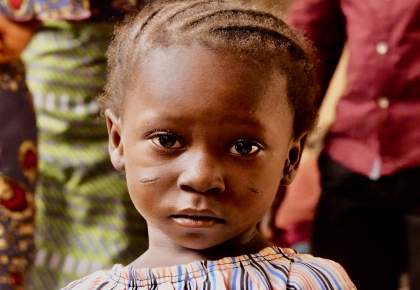
Tuitunze Asili, Kutetea Maisha (Swahili)
Tuitunze Asili, Kutetea Maisha (Swahili)
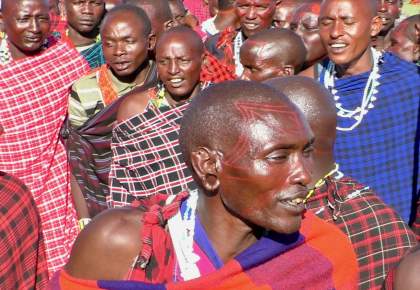
Olarrabal lengiminata o lkwak, kimitu Engishon (MAA Language)
Olarrabal lengiminata o lkwak, kimitu Engishon - MAA Language
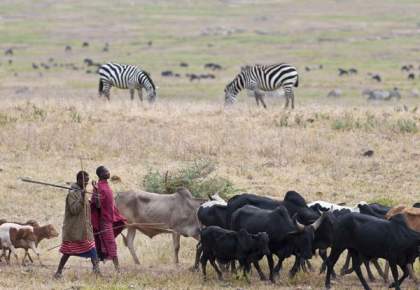
Tanzania ends hunting deal near Loliondo with UAE royal family; compromised government officials
Tanzania ends hunting deal with Dubai royal family (Source: Africa Sustainable Conservation News)
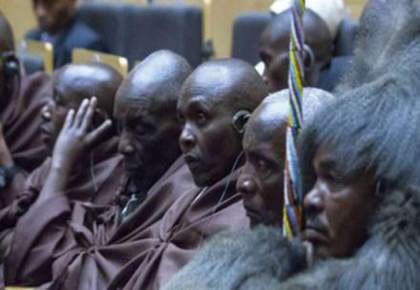
Huge victory for Kenya’s Ogiek
African Court sets major precedent for indigenous peoples’ land rights (FPP / Minority Rights Group International)
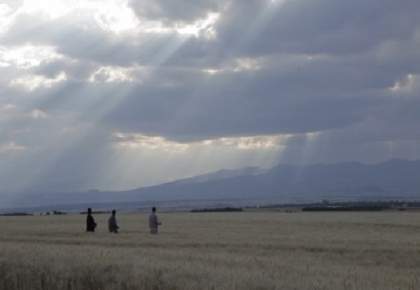
World Bank Ignores Land Grabbing
Sales of huge land areas of Ethiopia, by the Ethiopian government, to foreign investors, have led to starvation and forced displacement. (Flood / Arbetet.se)

Territories of Life workshops with the Shawi people
In late February 2017 LifeMosaic and Peru Equidad facilitated a three-day workshop for Shawi community leaders in the village San Antonio, Loreto department, Peru.

The Community Land Act: Now it’s up to communities
At last Kenya has a Community Land Act. (By LIZ ALDEN WILY)

Teritories of Life Launch, Kenya
In June, LifeMosaic brought the Territories of Life toolkit to Kenya, in partnership with the Kivulini Trust and the Waso Trustland Project.

MRG deeply disappointed by Arusha Court land rights judgment against Loliondo Maasai
A High Court ruling, handed down on October 28, 2015, against a Maasai community from Northern Tanzania, is deeply disappointing, says Minority Rights Group International (MRG press release).

New Video: Women Champions of Buffalo River is launched
A new video from the Territories of Life video toolkit tells the story of how Maasai indigenous women in Tanzania used awareness raising, protests and political pressure to lead a movement in defense of their territory.

Northern Tanzania Maasai Land Loss Threatens Indigenous Knowledge
After a five year gruelling court battle, the indigenous Maasai community in Northern Tanzania has lost the right to its traditional land after the High Court handed it to a US-based tourism company in a court ruling on 27 October. (Nzwili / Intellectual Property Watch)

Ecotourism Is Saving Tanzania’s Animals and Threatening Its Indigenous People
For more than a century, the Maasai have been corralled into smaller pieces of land in order to conserve the environment and animals— making room for deluxe suites and armies of tourists. (Friedman-Rudovsky / Vice.com)
Life Plan - Territories of Life
How the Misak indigenous people of Colombia are carrying out their Life Plan, a long-term, community-led plan for self-determined development on their territory.
-
What is Life Plan (Plan de Vida) about?
The Misak are an indigenous people whose territory is located in Cauca, Colombia. As with many indigenous peoples in Latin America, the Misak lost large parts of their territory during colonial rule. In the 1970s, they started a process of land reclamation and were eventually successful in gaining formal land rights recognition. Since then, the Misak have developed their Life Plan as a tool for self-determined development to ensure their gains would be preserved for future generations.
Length of video
23 minutes.
Download 'Life Plan' here.
Watch in French, Spanish, Indonesian and Swahili
Suggestions for Discussion Questions after community screenings
- What does 'development' mean to you and how does this differ from the meaning of 'development' used by government or companies?
- What are the 3 key steps to the Plan de Vida described in the video? How could these 3 steps apply to your community?
- What ways can you ensure everyone in the community is involved in developing and carrying out your long-term vision?
- How can you protect your culture and identity?
- What is the history of your people on the territory?
- What activities / practices / knowledge are important to your community? How have these helped you to live well over time and into the future?
Suggestions for Follow-up Activities after community screenings
- Travel your Territory. With as many of the community as are physically able, walk / paddle the entire boundary of your territory, relearning about the stories and the sacred places.
- Form an information-gathering team and develop a questionaire about the hopes, aspirations, skills and needs of the community. The team then interviews, collates and reports back to the whole community on their findings.
- Celebrate your Culture. Hold a cultural event to share food, stories, cosmology, traditional skills, games etc. Invite the community / neighbouring communities / wider public?
-
Documents and Downloads
Thinking Together For Those Coming Behind Us: An Outline Plan for the Care of Wapichan Territory
After years of painstaking work and multiple community consultations, the indigenous Wapichan people of southern Guyana have set out agreements and proposals for caring for their territory in a ground-breaking plan titled Baokopa’o wa di’itinpan wadauniinao ati’o nii (Thinking together for those coming behind us). This innovative grass-roots effort has resulted in more than one hundred inter-community agreements on sustainable land use, including proposals to establish an extensive Wapichan Conserved Forest over old-growth rainforest in the eastern part of their territory. Discussions and agreements also involved documenting a community vision for community land use, livelihood and culture in Wapichan Wiizi (Wapichan territory) in 25 years’ time (a document of the indigenous peoples of the South Rupununi, 2012).
Thinking Together For Those Coming Behind Us (Summary)
This brochure summarises key contents of the Wapichan people's territorial plan 'Baokopa’o wa di’itinpan wadauniinao ati’O Nii' ('Thinking Together For Those Coming Behind Us'). The summary includes examples of agreements made between villages on ways to secure and care for their lands, forests, savannahs, wetlands and mountains and promote self-determined development in Wapichan communities (The indigenous peoples of the South Rupununi, 2012).
Biocultural Community Protocols: A Toolkit for Community Facilitators
This toolkit is for Indigenous peoples, local and mobile communities,and supporting community-based and non-governmental organizations (CBOs and NGOs). It is intended to support communities to secure their rights and responsibilities and strengthen customary ways of life and stewardship of their territories and areas. It is directed primarily towards facilitators from the communities themselves or from supporting organizations with whom they have long-standing and positive relationships. Produced by Natural Justice, their vision is the conservation and sustainable use of biological diversity through the self-determination of Indigenous peoples and local communities (Eds. Holly Shrumm & Harry Jonas. www.naturaljustice.org, 2012).
Other videos
Fever: Organisation (English)
Part 3: Organisation gives examples of organisational tools and strategies used by indigenous peoples to protect their cultures, territories and rights. The film covers: awareness raising; organisational tools; networks and communication; petitions; legal cases and international law; unity, life plan; spirituality; movements. (LifeMosaic, 2010)
Revival
Revival, a film from MELCA Ethiopia and The Gaia Foundation, follows a meeting of African Sacred Natural Site Custodians in the stunning highlands of Bale, Ethiopia. There they gathered to celebrate MELCA Ethiopia's ten years working to revive Sacred Natural Sites and customary law in Ethiopia, to exchange knowledge, stories and experiences. Featuring interviews with Sacred Natural Site Custodians and Earth Jurisprudence practitioners and vibrant footage from Ethiopia's unique highland ecology, Revival takes us to the heart of efforts to regenerate biocultural diversity and restore a respectful relationship with Earth in Africa (The Gaia Foundation, 2015).
Related links
Center for Indigenous Knowledge and Organizational Development (CIKOD)
The Center for Indigenous Knowledge and Organizational Development (CIKOD) is a Ghanaian NGO working to develop methodologies for the strengthening of traditional authorities and civil society organizations to facilitate sustainable grassroots organizational development that gives voice to the poor and vulnerable rural families.
Community Protocols
Protocols developed by Indigenous peoples or mobile or local communities ("community protocols") are gaining recognition as a useful means by which a range of peoples and communities can engage with others according to their values, and on the basis of customary, national and international rights and responsibilities. This website is intended for Indigenous peoples, mobile and local communities, their community-based and non-governmental organizations, governmental agencies, and researchers, among others, to: - Provide information about community protocols, - Share good practice about the development and use of community protocols, - Highlight the questions that peoples and communities are raising about community protocols, - Provide a range of resources relevant for the development and use of community protocols, and - Act as a clearing house for protocols developed by Indigenous peoples and local communities.
COMPAS
COMPAS (comparing and supporting endogenous development) is an international network implementing field programmes to develop, test and improve endogenous development methodologies. Endogenous development is based on local peoples' own criteria of development, and takes into account the material, social and spiritual well-being of peoples.
Land Rights - Territories of Life
This video describes and compares community concessions on state land, individual land ownership and communal ownership of territory.
-
What is 'Land Rights' about?
This video describes and compares community concessions on state land, individual land ownership and communal ownership of territory. The video is especially for communities whose land rights have not yet been recognised, to help them think through what type of rights they want.
Length of Video
14 minutes.
Why Screen 'Land Rights'?
This video, based on experiences from Latin America, Africa and Indonesia, discusses community concessions on state land, and individual certification, both approaches that many governments and international institutions are promoting. It compares these with the recognition of communal rights over territory, which indigenous peoples around the world feel best reflect their cultural and spiritual connections to their lands, resources and territories.
Where are the communities in this video from?
Merangin, Molo, Pandumaan-Sipituhuta, Penunggu - Indonesia
Secoya – Ecuador
Maasai – TanzaniaDownload 'Land Rights' here.
Watch in French, Spanish, Indonesian and Swahili
Suggestions for Discussion Questions after community screenings
- In what way do you expect the State to recognize indigenous peoples?
- What rights do you seek over your lands and natural resources?
- If you seek self-governance, through which institutions will you govern yourselves? How will you relate to the local government?
- What are the boundaries of your territory, what does your territory include and exclude?
- Who now owns the land that makes up your ancestral territory? How has this situation changed over the past decades?
- What is the role of customary institutions and leadership in managing your territory?
- What are your rules about selling land and splitting up the territory?
- What are the advantages and disadvantages of individual land rights?
- What are the advantages and disadvantages of concession rights?
- What are the advantages and disadvantages communal land rights?
Suggestions for Follow-up Activities after community screenings
- Find out about the policies and current situation of land rights for indigenous peoples in your country.
- Do a role-play in which your community has no rights to your territory. Separate into three groups and have each group argue for the benefits or the drawbacks of individual rights, community concessions and communal rights.
-
Documents and Downloads
Indigenous peoples’ rights to lands, territories, and resources
The new study by ILC confirms what we knew: indigenous peoples entertain special relationships with their lands, territories and resources, as these are central to their world view, their cultures, livelihoods, spirituality, identity, and their continued existence as distinct peoples. The author of the present study, Birgitte Feiring, is a renowned anthropologist who has worked on indigenous peoples’ rights and development for more than 25 years in several agencies worldwide, including as the ILO Chief Technical Adviser on Convention No. 169 and as an adviser to bilateral and multilateral agencies and to indigenous peoples themselves. (International Land Coalition, 2013)
Whose Land Is It? Commons and Conflict States
This paper addresses the tenure fate of three commons: the 30 million hectares of pasturelands of Afghanistan which represent 45 percent of the total land area and are key to livelihood and water catchment in that exceedingly dry country; the 5.7 million hectares of timber-rich tropical forests in Liberia, 59 percent of the total land area; and the 125 million hectares of savannah in Sudan, half the area of that largest state of Africa. All three resources have an uncountably long history as customary properties of local communities. They also share a 20th century history as the property of the state. Of course there is nothing unusual in this contradiction. Between one and two billion people on the planet today are tenants of the State (CLEP, 2008, Alden Wily, forthcoming (b)). They live on and use traditional properties on which, in the eyes of the national laws of those countries, they are no more than lawful occupants and users. When their expansive collectively-owned forest, pastoral and swamp lands are taken into account, up to five billion hectares are involved, potentially one third of the world’s total land area (Wily / RRI, 2010).
Who Owns The Land in Africa? Formal recognition of community-based land rights in Sub-Saharan Africa
This brief summarizes findings on community ownership and control of lands in 19 countries in Sub-Saharan Africa that were included in the RRI's global baseline study (RRI, 2015).
Rights to Resources in Crisis: Reviewing the Fate of Customary Tenure in Africa
This is the first in a series of briefs about modern African land tenure that provides up-to-date analysis on the status of customary land rights in Sub-Saharan Africa. The purpose of the series is to inform and help to structure advocacy and action aimed at challenging the weak legal status of customary land rights in many African countries (Wily / RRI, 2012).
Securing community land and resource rights in Africa: A guide to legal reform and best practices
This guide, produced by FERN, the Forest Peoples Programme (FPP), ClientEarth and the Centre for Environment and Development (CED), explains key aspects of law and land rights that are important for securing community ownership and control of land and resources – also referred to as secure land and resource tenure. It explains how to identify and create opportunities for law reform and offers examples of reforms that have taken place in several African countries (2014).
Land rights and the forest peoples of Africa: Historical, legal and anthropological perspectives
FPP has published a series of five country studies, and an in-depth overview, examining indigenous peoples' land rights in the forested countries of Africa. The country studies have been produced in collaboration with African experts from Burundi, Cameroon, Democratic Republic of Congo, Rwanda and Uganda (Forest Peoples Programme, 2009).
Land Rights Issues in International Human Rights Law
Up to one quarter of the world’s population is estimated to be landless, including 200 million people living in rural areas. For many of these people, the condition of landlessness threatens the enjoyment of a number of fundamental human rights. Access to land is important for development and poverty reduction, but also often necessary for access to numerous economic, social and cultural rights, and as a gateway for many civil and political rights. However, there is no right to land codified in international human rights law. This article, which was originally written as a briefing paper for the “Forum on Land, Business, and Human Rights” convened in Manesar, India by the Institute for Human Rights and Business in June 2009, provides a brief overview of the legal implications of access to land for a broad range of human rights. Land is a cross-cutting issue, and is not simply a resource for one human right in the international legal framework. Rights have been established in the international legal framework that explicitly relate to land access for particular groups, such as indigenous people and, to a more limited extent, women. In addition, numerous rights are affected by access to land, including the rights to housing, food, water and work, and general principles in international law also provide protections relating to access to land, such as equality and nondiscrimination in ownership and inheritance (Wickeri, Elisabeth and Kalhan, Anil, Land Rights Issues in International Human Rights Law. Malaysian Journal on Human Rights, Vol. 4, No. 10, 2010; Drexel University Earle Mack School of Law Research Paper ; Fordham Law Legal Studies Research Paper No. 1921447).
What Rights? A Comparative Analysis
'What Rights? A Comparative Analysis of Developing Countries’ National Legislation on Community and Indigenous Peoples’ Forest Tenure Rights' presents a legal analysis of the national legislation that relates to Indigenous Peoples’ and communities’ forest tenure rights at a global scale by assessing whether the legal systems of 27 of the most forested developing countries of the world recognize the rights of Indigenous Peoples and communities to access, withdraw, manage, exclude and alienate to forest resources and land. The countries included in this study are home to 2.2 billion rural people and include approximately 75% of the forests in the developing world (RRI, 2012).
Legally Securing Community Lands: Principles & Paths
Land tenure specialist Liz Alden Wily's principles and paths for securing tenure of community lands (2013).
Other videos
Our Land, Our Life
"Our Land, Our Life" presents the struggle of Carrie and Mary Dann, two Western Shoshone elders, to address the threat mining development poses to the sacred and environmentally sensitive lands of Crescent Valley, Nevada (Oxfam America, 2008).
Related links
Rights and Resources Initiative (RRI) Eng
The RRI coalition are directly engaged in land and forest policy reforms in close to 20 countries throughout Africa, Asia and Latin America. Together, they are working to encourage greater global commitment and action on pro-poor tenure, policy and market reforms.
Tebtebba
Working for the respect, protection and fulfillment of indigenous peoples’ rights and operationalization of indigenous peoples’ self-determined sustainable development
El Buen Vivir and The Commons: A Conversation Between Gustavo Soto Santiesteban and Silke Helfrich
A conversation between Gustavo Soto Santiesteban, a Bolivian researcher and consultant on indigenous issues and Silke Helfrich, an author and commons activist, about the indigenous notion of buen vivir and the commons. Featured in The Wealth of the Commons: A World Beyond Market and State.
-
Land Rights News

Farmers walk from N. Sumatra to Jakarta to demand Jokowi settle land dispute
Hundreds of farmers have walked thousands of kilometers from their homes in Deli Serdang regency, North Sumatra, to the capital city. SOURCE: Nina A. Loasana The Jakarta Post
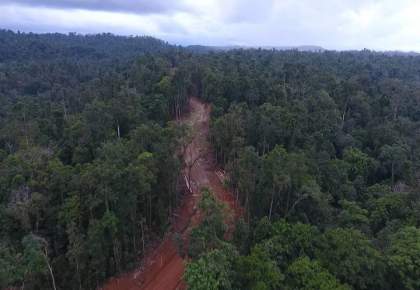
PNG villagers count huge cost of damage from logging
Communities in Papua New Guinea's West Pomio District will suffer more than $US 730 million worth of damage due to Special Agriculture Business Leases, according to a local advocacy group. (By RadioNZ)

Environmental lawyers seek legal rights for the natural world
Rivers and other natural features have intrinsic rights and should own themselves, rather than being considered property (Source PRI)
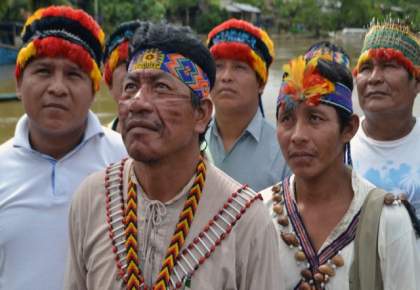
Rights of indigenous peoples in Peru make a step forward
After months of struggle, the government in Peru has committed to respecting the rights of indigenous communities affected by oil exploitation. (Source Oxfam Peru)

Tanzania ends hunting deal near Loliondo with UAE royal family; compromised government officials
Tanzania ends hunting deal with Dubai royal family (Source: Africa Sustainable Conservation News)

First global pact backing indigenous land rights launched
The International Land and Forest Tenure Facility dedicated to securing the land rights of indigenous communities worldwide has been formally launched. (The Straits Times)

Six farmers shot dead over land rights battle in Peru
The victims were targeted by a criminal gang who wanted to use their lands to grow lucrative palm oil, according to local indigenous leaders (Collyns / The Guardian)

‘We’d rather die than lose’: villagers in Indonesia fight for a land rights revolution
A small community on the island of Sumatra is at the heart of a battle for traditional territories that could finally resolve the muddled and exploitative system of laws governing land ownership in Indonesia. (Bevins / the Guardian)

Illegal logging and hunting threaten Yasuní isolated indigenous groups
Yasuní National Park and the Tagaeri-Taromenane Intangible Zone (ZITT), home to isolated indigenous groups, have become hotspots of illegal logging and hunting. (Source: Mongabay)

Rivers Get Human Rights: They Can Sue to Protect ThemselvesIn New Zealand and Ecuador, rivers with l
In New Zealand and Ecuador, rivers with legal aspects of “personhood” open up new environmental battles (By Mihnea Tanasescu - Scientific American)

Huge victory for Kenya’s Ogiek
African Court sets major precedent for indigenous peoples’ land rights (FPP / Minority Rights Group International)

Amazonians call on leaders to heed link between land rights and climate change
As Paris climate agreement comes into force, inhabitants of Amazon rainforest demand recognition of key role their communities play in conservation (Collyns / The Guardian)
LifeMosaic-CINEP workshop with Wiwa youth in Colombia
LifeMosaic and CINEP teamed up to bring our Territories of Life toolkit and workshops to youth from three Wiwa communities in the Sierra Nevada de Santa Marta.

The Community Land Act: Now it’s up to communities
At last Kenya has a Community Land Act. (By LIZ ALDEN WILY)

Mundemba declaration and statement of solidarity: women, communities say NO to oil palm expansion
A statement of solidarity with the communities of Ndian Division, Southwest Region of Cameroon acknowledging their courage whilst faced with the threat to their land rights from corporate oil palm plantations. (SEFE, RADD, CED, GRAIN and WRM / grain.org)

The indigenous community whose forest is their supermarket
Dayak Iban people who live along the Utik River in Indonesian Borneo have a special relationship with the surrounding environment (Andi Fachrizal / Mongabay).

Land rights: “Our territory belongs to us and we belong to our territory”
LifeMosaic’s new video on “Land Rights” takes a look at three different types of land rights: community concessions on state land, individual land ownership and communal ownership of territory. It’s the fourth in LifeMosaic’s series “Territories of Life“ (Chris Lang / redd-monitor.org).
Benefits of Territory - Territories of Life
What are the benefits of secure tenure for indigenous peoples, for the environment and for wider society?
-
What is 'Benefits of Territory' about?
What are the benefits of secure tenure for indigenous peoples, for the environment and for wider society?
Length of Video
9 minutes.
Why Screen 'Benefits of Territory'?
This video can be screened to communities as well as government officials and the general public to raise awareness of the importance of secure land tenure for indigenous peoples, the environment and wider society.
Download 'Benefits of Territory' here.
Watch in French, Spanish, Indonesian and Swahili
Suggestions for Discussion Questions after community screenings
- What does territory mean to you and your community?
- What benefits does your community gain from your territory in terms of culture, economic benefits, livelihoods, water resources etc.?
- How does or how would secure land tenure for your community benefit the environment and wider society?
- How do you manage your territory?
- How do you protect your territory?
- How can the knowledge that secure rights deliver benefits for communities, the environment and wider society help your struggle for the recognition of your rights, including your rights to your territory?
Suggestions for Follow-up Activities after community screenings
- In small groups, list all the resources that your territory provides for free that would otherwise have to be paid for (for example, food, medicines, building materials, cultural materials etc.).
- Discuss or show on a map the wider area that benefits from your territory, such as the waters that are protected by watersheds on your territory.
-
Documents and Downloads
Indigenous peoples’ rights to lands, territories, and resources
The new study by ILC confirms what we knew: indigenous peoples entertain special relationships with their lands, territories and resources, as these are central to their world view, their cultures, livelihoods, spirituality, identity, and their continued existence as distinct peoples. The author of the present study, Birgitte Feiring, is a renowned anthropologist who has worked on indigenous peoples’ rights and development for more than 25 years in several agencies worldwide, including as the ILO Chief Technical Adviser on Convention No. 169 and as an adviser to bilateral and multilateral agencies and to indigenous peoples themselves. (International Land Coalition, 2013)
Securing Rights, Combating Climate Change
Securing Rights, Combating Climate Change analyzes the growing body of evidence linking community forest rights with healthier forests and lower carbon dioxide (CO2) emissions from deforestation and forest degradation. This report makes a strong case for strengthening the rights of indigenous and local communities over their forests as a policy tool for mitigating climate change. (Rights and Resources Initiative, 2014)
- Securing Rights, Combating Climate Change - Executive Summary (pdf - 2 MB)
- Securing Rights, Combating Climate Change - Report (pdf - 9 MB)
Large-Scale Land Acquisitions and Food Security
Rerpot by DFID looking into the questions of the impacts of large-scale land acquisitions (LSA) on local food insecurity and malnutrition levels; and differences in impacts between the international and local investments (Tanner / DFIF and CEIL PEAKS, 2013)
Other videos
A Forest for Life. Forest management in Emberá Wounaan
A Forest for Life. Forest Management in the Embera Wounan Territory presents the achievements of this territory in the Panamanian Darien in the sustainable management of its natural resources. The video illustrates the progress and achievements of indigenous forest management through interviews with community leaders. Despite this progress, however, these Indigenous Peoples face a series of challenges in consolidating the sustainable management of their resources, including external pressures that threaten their territories, as well as regulatory and logistical obstacles. The experience demonstrates the capacity and potential for Indigenous Peoples as central actors in sustainable forest management and development based on their own cosmovision. (Alba Sud, 2013)
Indigenous Peoples: The Guardian of Indonesian Forest
From Papua to Sumatra, representatives of indigenous peoples agree on the importance of forests. They have proven themselves to be the faithful guardians of Indonesian forests. From Papua to Sumatra, communities are facing similar troubles in the destruction of their forests: large-scale oil palm, plantation forest, and mining concessions. Can Indonesia’s indigenous communities protect more than 15 million hectares of currently pristine customary forests? To save lives, biodiversity, and global climate. This film urges everyone to think clearly, especially to the Indonesian government to place their complete trust in these communities to sustainably manage forests. (Telapak / Gekko Studio, 2011)
CBFM Local Solution to Global Challenges
The video “Community Based Forest Management: Local Solutions to Global Challenges”expounds on the important role of community based forest management in indigenous peoples’ livelihood and food security; spiritual and cultural values; and climate change mitigation. The video focuses on the land use system of Lua (La-weu) indigenous peoples including sustainable practice of shifting cultivation in northern Thailand; and the challenges faced by the Bhagpani and Sitalupakha Women’s Community Forestry User Groups on forest management in Nepal. (The Asia Indigenous Peoples Pact / International Work Group for Indigenous Affairs / Indigenous Peoples’ Foundation for Education and Environment, 2014)
Sukutan Spring
The Sukutan community, Laikipia, Kenya, survives because of the spring they live next to. They use it for their livestock and share it with other communities, as well as with the abundant wildlife in the area. With rising climate change impacts they have witnessed an increase in inter-tribal conflict but lessons can be learnt from living together. (ResourceAfrica UK, 2012)
Land has Breath: rediscovering Altai’s human-nature relationships
Land has breath, an umbilical cord, nose, mouth eyes and ears... everything that exists on earth is alive. Altai is a harmonious co-existence of humanity and nature. This is traditional wisdom of the people of Russia's Altai Republic, located at the crossroads of China, Kazakhstan and Mongolia. The mountains here host rich indigenous culture that has protected the natural environment for countless generations. (UNU-IAS, 2010)
Lessons Learned from Jambi: People, Forest, and Recognition
In Jambi, Sumatra, the Bathin IX and Rimba Peoples have faces incredible pressures due to the loss of forest and land they call home. Oil palm and plantation forest expansions threaten the existence of these two groups. The people of Lubuk Beringin are aware of the importance of forest and the impacts of its degradation are often seen in Jambi. The people are protecting their forest and obtained the recognition with the Village Forest scheme. This movie shows two communities who lost their forests and another community with an intact forest. (Telapak / Gekko Studio, 2011)
Conversations with the Earth: Indigenous Voices on Climate Change
Photo essays and video projects from indigenous communities facing ecosystem disruption make up the collaborative project Conversations with the Earth. (Conversations with the Earth, 2011)
Fever: Resilience (English)
Resilience is the ability to cope and recover from abrupt change. Indigenous peoples who are organised, confident to adjust their systems to changing circumstances, while maintaining their identity strong, will be better able to withstand shocks caused by climate change. The film shows 5 examples of this: cultural resilience; traditional forest management; strengthening customary law to live within the limits of the environment; maintaining seed diversity; and adapting traditional systems to cope with water scarcity. (LifeMosaic, 2010)
Related links
UNU-IAS Traditional Knowledge Initiative
An excellent youtube channel by UNU-IAS United Nations University Traditional Knowledge Initiative with a collection of videos on indigenous peoples and climate change.
-
Additional Information
- Community ownership of forests and local participation in rule-making led to significantly lower carbon emissions in a sample of 80 forests in East Africa, South Asia, and Latin America (Chaatre and Agrawal, PNAS, 2009).
- 70% of the world’s people are fed by small-scale agroecological food producers, using only 30% of the world’s land and few external inputs (ETC, 2009). Despite this, these are the communities most threatened by land grabs.
- Many or most of the world’s major centers of biodiversity coincide with areas occupied or controlled by Indigenous Peoples. Traditional Indigenous Territories encompass up to 22 percent of the world’s land surface. They coincide with areas that hold 80 percent of the planet’s biodiversity (WRI 2005) (World Bank, 2008).
- Tropical forests under strict protection by governments have far higher rates of deforestation than those under the care of local communities. When done properly, the benefits of community-based management can be seen over the long term, leading to greater conservation, participation, reduced poverty, increased economic productivity and the protection of many forest species. A CIFOR study compared case studies in 16 countries and found that government-protected forests, including national parks, suffered six times greater rates of deforestation.
- 13-20% of global CO2 emissions are from deforestation and forest degradation. This level would be far greater if indigenous peoples were not protecting their forests. By reducing large-scale environmental depredation, indigenous peoples tenure security helps biodiversity protection, forest governance and climate security (NSC).
- Indigenous territories in Asia & Latin America are much more effective in limiting damage from fires than strictly protected areas such as national parks (Nelson and Chomitz, World Bank, 2011).
- Mexico: Forest cover change in 22 community forests compared favorably with 60 protected areas nationwide (Durán et al. 2005).
- Nicaragua: Indigenous territories compare favorably to protected areas in Mosquitia regions, using multiple methods (Hayes, 2007).
- Nepal: Multiple local studies find fewer fires, higher tree density and diameters, improved forest cover, and less grazing in community forests (Ojha et al. 2010).
- Tanzania: Forests improved in a sample of 13 community managed forests, but declined in government forests (Blomley et al. 2008).
- Brazil: multiple studies showed Indigenous territories limited deforestation much more than strictly protected areas (for instance, Soares Filho et al, PNAS, 2009 and Nepstad et al, 2006). A WRI study demonstrated that from 2000 to 2012, tree cover loss inside Brazil’s Indigenous Lands of the Amazon Basin totaled only 0.6 percent, compared with 7.0 percent in areas outside those lands, as seen in the satellite imagery below (WRI, 2014):

(Click here to see enlarged.) - Panama: it has been found that indigenous peoples' territories, known locally as comarcas, which cover 31.6 percent of Panama's land area and contain 54 percent of its mature and primary forests, exhibit lower rates of tree cover loss than other forested areas and contain many of the country’s Intact Forest Landscapes (WRI, 2014):

(Click here to see enlarged.)
Company Tactics - Territories of Life
This video describes the tactics many companies use to convince communities to accept and support their projects.
-
What is 'Company Tactics' about?
This video describes the tactics that companies use to convince communities to accept and support their projects, and shows that these tactics are used across continents and industries.
When communities are aware of these tactics and are prepared for how to counter them, they are more likely to be able to maintain their position in dealing with land decisions concerning outside developments. The video is based on the experiences of communities in Cameroon, Indonesia and Paraguay.Length of Video
14 minutes.
Why screen 'Company Tactics'?
This video should be screened in communities where plantations, mining or other large-scale developments are happening or could happen in future.
Download 'Company Tactics' here.
Watch in French, Spanish, Indonesian, English, Baka, Bagyeli, Tok Pisin and Swahili
Suggestions for Discussion Questions after community screenings
- What are the characteristics of good and of bad consultation and consent? Who should be involved?
- Make a list of the tactics you are aware of that companies use to get land (for example, promises of development, bribery and corruption, intimidation and agression, amongst others). For each tactic, make a list of possible ways to counter these tactics.
- Which person or institution should represent your community in negotiations with outsiders?
- If your community suspects that a leader is not representing the wider views of the community, or is corrupt, what steps can you take, or what sanctions could you impose?
Suggestions for Follow-up Activities after community screenings- Carry out a role-play of a socialisation meeting, where various tactics are used and countered by the community.
- If a company is interested in investing in your area, send representatives from your community to visit other communities where that same company is operating to find out about their experiences.
-
Documents and Downloads
A Training Manual on Advocacy, Lobbying and Negotiation Skills
Indigenous peoples assert that rights cannot be compromised; however, indigenous peoples’ delegates have recognized the need to strengthen existing skills and capacities for lobbying and advocacy. AIPP member/partner organizations pointed out the need for a manual to help empower indigenous peoples with knowledge and skills for effective advocay and lobbying to help empower indigenous peoples with knowledge and skills for effective advocay and lobbying. Thus AIPP developed this training manual on “Advocacy, Lobbying and Negotiation Skills for Indigenous Peoples in Climate Change and REDD+.” (AIPP, 2013)
Communities as Counterparties
An analysis of almost 73,000 concessions in eight tropical forested countries, more than 93% of these developments were found to involve land inhabited by Indigenous Peoples and local communities. This report, prepared by The Munden Project, highlights the alarming amount of land that governments have handed over to the private sector for mining, logging, agriculture, oil and gas, including 40% of all land in Peru and 30% in Indonesia. (RRI 2014)
Conflict or Consent?
Oil palm has become one of the world’s most controversial crops. Lucrative for some, its social and environmental impacts are often severe. To avert criticism, some of the more progressive companies have promised to only finance, produce, trade and buy palm oil that is ‘sustainably’ produced. Since 2005, the Roundtable on Sustainable Palm Oil (RSPO) has required that member companies respect communities’ legal and customary rights and only develop oil palm on their lands with their free, prior and informed consent. Are the companies keeping their promises? Have they changed the way they develop and manage lands since this new standard was adopted? This volume of 16 detailed case studies from six countries seeks to answer these questions. ( FPP, Sawit Watch and TUK Indonesia, 2013)
Exploitation and empty promises: Wilmar’s Nigerian landgrab
This document uses first-person testimonies, satellite maps, and Wilmar’s own filings with the Roundtable on Sustainable Palm Oil to demonstrate that the company failed to gain the Free, Prior and Informed Consent of communities directly affected by its operations; failed to produce adequate Environmental and Social Impact Assessments; and failed to live up to promises of infrastructure development and benefit sharing, despite these promises being a primary incentive for local communities to allow the company to operate in Cross River State. (foei.org, 2015)
Free, Prior and Informed Consent and the RSPO
This briefing, launched on the occasion of the 10th Roundtable on Sustainable Palm Oil, draws together the key findings of fourteen studies on FPIC in RSPO member/certified plantations based on the RSPO Principles & Criteria and related Indicators and Guidance, and makes recommendations for reforms in the way palm oil companies honour the principle of FPIC and respect customary rights to land. (FPP / SawitWatch, 2012)
Handbook on Community Engagement
A ‘good practice’ guide to negotiating lease agreements with landowning communities in South Sudan, which also makes a usuful read for communities elswhere (South Sudan Law Society, 2011 )
Nature is not for Sale!
Respect communities' rights. Stop the takeover of nature by finance! In the run up to the 2012 UN Conference on Sustainable Development in Rio de Janeiro, Friends of the Earth France launched their ‘Nature is not for sale!’ campaign, to highlight the dangers of putting a price on nature. Making nature, ecosystems and water tradable will not solve our current global crisis and this short and accessible citizens’ guide explains why. It also criticises the finance sector’s ‘Natural Capital Declaration’ which outlines new market mechanisms which the finance sector aims to use as part of the so-called ‘green economy’. (Les Amis de la Terre France, 2012)
Oil Dependency and the Peruvian Amazon: How Oil Companies Have Exploited the Rainforest of Loreto
For more than 40 years, oil activity has brought destruction to the ecosystems and the indigenous people of four river basins, all major tributaries to the Amazon, which gives life to the biggest rainforest on Earth. The operator responsible for this human and environmental disaster, Pluspetrol Norte S.A., has evaded any responsibility. The company’s contract expires on August 29, 2015, but now a new oil lot, 192, has been created and put up for sale. Three big oil companies have shown an interest, including Pluspetrol Norte S.A, but the indigenous people of the River Tigre have stated they will not permit this operator to stay one day longer on their territories. Read their testimonies and more about the impact of oil exploitation in this report (Chaikuni Institute, 2015).
Surrendering Our Future
A new report released by the Oakland Institute reveals how the lives and livelihoods of more than 9,000 pastoralists and a protected ecosystem in northwestern Senegal are directly threatened by a foreign-controlled 20,000-hectare plantation. Owned by an international conglomerate with hidden investors and suspicious connections, Senhuile SA is a joint venture controlled by Italy's Tampieri Financial Group, Senegalese investors, and Agro Bioethanol International, a shell company registered in New York. (Oakland Institute, 2014)
Other videos
Corporate Branding: Asia Pulp & Paper - Reforestation Television Ad
This is an advertisement BY Asia Pulp & Paper (APP)
Don’t Pulp Pandumaan-Sipituhuta: A David and Goliath Tale
The pulp and paper industry is growing all over Indonesia. The Toba Pulp Lestari (TPL) company, is expanding its eucalyptus plantations on the lands of the indigenous communities of Pandumaan-Sipituhuta in North Sumatra. The communities have lived and worked on their lands for 13 generations. They are peacefully resisting to defend their forests and their livelihoods. But their defence of their lands comes at a heavy cost as they are criminalised. Please stand together with this community at the front-line of the global land grab that is putting profit ahead of rights. (Pandumaan-Sipituhuta / KSPPM / LifeMosaic, 2013)
Manufacturing Consent
Evidence and testimony from Muara Tae, in East Kalimantan, Indonesia, of the abuses of oil palm company First Resources Ltd thought its subsidiary PT Borneo Surya Mining Jaya (PT Borneo). (EIA, 2012)
Related links
farmlandgrab.org
This website contains mainly news reports about the global rush to buy up or lease farmlands abroad as a strategy to secure basic food supplies or simply for profit. Its purpose is to serve as a resource for those monitoring or researching the issue, particularly social activists, non-government organisations and journalists.
Forest Peoples Programme
Forest Peoples Programme (FPP) was founded in 1990 in response to the forest crisis, and focuses on working to support the rights of forest dependant communities around the world. The website includes an overview of the NGO's work as well as a rich resources and publications section..
-
Additional Information
Indigenous and local communities are routinely not consulted when land deals are made, and as a result are dispossessed of their lands, become displaced or find themselves embroiled in violent conflicts when attempting to protect their homes.
When consulted, communities are often misled or insufficiently informed about the impacts of the deals. Many communities mistakenly believe they will retain rights over and access to their territories, lands and resources. Many are not informed about the environmental impacts and pollution associated with modern agricultural practices or resource extraction, and the consequences that these will have for their livelihoods.
Land Grabs - Territories of Life
What are land grabs? Why are they happening, and what are their impacts?
-
What is 'Land Grabs' about?
Indigenous communities around the world are seeing their lands threatened by the extractive and agro-industries, by conservation schemes and by tourism developments. This video looks into the scale, drivers and impacts of the global rush for land. In this video we hear from indigenous peoples from Asia, Latin America and Africa who have first hand experience of the impacts of land grabs.
Length of video
14 minutes.
Why screen 'Land Grabs'?
This video should be screened in communities where plantations, mining or other large-scale developments are happening or could happen in the future. It can also be screened to government officials, in universities and to the general public to raise awareness of land grabbing.
Download Facilitators Guide here
Watch in French, Spanish, English, Indonesian, Swahili, Baka, Bagyeli, and Tok Pisin
Suggestions for Discussion Questions after community screenings
- What are the threats to your territory?
- What impacts do communities experience from losing their lands?
- What other large-scale developments are happening in your area?
- What are you currently doing to defend your land, what else could you do?
Suggestions for Follow-up Activities after community screenings
- Find out about the industries and companies that are operating in your area/province, as well as who are responsible for giving permits and concessions to operate.
- Visit a community that now lives in a plantation/next to a mining site to learn about the impacts they are experiencing.
Where are the communities in this video from?
Guarani, Enxet – Paraguay - Soy Plantations
Secoya – Ecuador - Oil Drilling
Misak – Colombia
Maasai – Tanzania - Conservation and Tourism
Nguti and Mundemba – Cameroon - Oil Palm Plantations
Malind - Merauke
Dayak - West Kalimantan
-
Documents and Downloads
Territories of Life - Facilitators Guide
This booklet is for community facilitators who are using the Territories of Life Video series. The booklet covers information about each video in the series as well as tips on hosting screenings, discussions and action planning sessions with communities.
Oil Dependency and the Peruvian Amazon: How Oil Companies Have Exploited the Rainforest of Loreto
For more than 40 years, oil activity has brought destruction to the ecosystems and the indigenous people of four river basins, all major tributaries to the Amazon, which gives life to the biggest rainforest on Earth. The operator responsible for this human and environmental disaster, Pluspetrol Norte S.A., has evaded any responsibility. The company’s contract expires on August 29, 2015, but now a new oil lot, 192, has been created and put up for sale. Three big oil companies have shown an interest, including Pluspetrol Norte S.A, but the indigenous people of the River Tigre have stated they will not permit this operator to stay one day longer on their territories. Read their testimonies and more about the impact of oil exploitation in this report (Chaikuni Institute, 2015).
Exploitation and empty promises: Wilmar’s Nigerian landgrab
This document uses first-person testimonies, satellite maps, and Wilmar’s own filings with the Roundtable on Sustainable Palm Oil to demonstrate that the company failed to gain the Free, Prior and Informed Consent of communities directly affected by its operations; failed to produce adequate Environmental and Social Impact Assessments; and failed to live up to promises of infrastructure development and benefit sharing, despite these promises being a primary incentive for local communities to allow the company to operate in Cross River State. (foei.org, 2015)
The Great Land Heist
Over recent years, a global land rush has resulted in a massive rise in the number of people in developing countries being evicted or denied access to their own land – sometimes in violent confrontation with the authorities – as big business moves in. . Offered little in the way of compensation or alternative livelihoods, millions are being forced into increased poverty, hunger and dispossession. (ActionAid, 2014)
The New Snake Oil? Violence, threats & false promises driving rapid palm oil expansion in Liberia
As Liberia emerges as a new frontier market for the world’s cheapest, most popular vegetable oil, The New Snake Oil details how state officials are said to be helping the palm oil company Golden Veroleum (GVL) harass communities into signing away their land and crush dissent. The report also documents the huge foreign investment, state-sanctioned violence, and regulatory black holes that are making this possible. Global Witness reveals how GVL (whose parent company is the Indonesian Golden Agri-Resources) accelerated its operations at the peak of Liberia’s 2014 Ebola outbreak. This report comes at a point when ten percent of Liberia has been designated for agricultural plantations, despite the lack of a legal framework to regulate how companies acquire contracts, operate and remain accountable for their activities (www.globalwitness.org, 2015).
West Papua Oil Palm Atlas
The West Papua Oil Palm Atlas portrays a frontier region's early encounters with a crop that has come to dominate the Sumatran and Bornean landscapes.
Communities as Counterparties
An analysis of almost 73,000 concessions in eight tropical forested countries, more than 93% of these developments were found to involve land inhabited by Indigenous Peoples and local communities. This report, prepared by The Munden Project, highlights the alarming amount of land that governments have handed over to the private sector for mining, logging, agriculture, oil and gas, including 40% of all land in Peru and 30% in Indonesia. (RRI 2014)
Planet palm oil
Expanding production of cheap palm oil comes at a high price. Destruction of rainforests, labour exploitation, and brutal land grabbing: these are just a few of the nasty consequences that come with today's oil palm plantations. With palm oil companies finding lands in Indonesia and Malaysia more difficult to acquire, attention is shifting to Africa. Over the past fifteen years, foreign companies have signed over 60 deals covering nearly 4 million hectares in central and western Africa for the development of oil palm plantations. The land grabs are already generating violent conflicts in several African countries. (GRAIN, 2014)
Other videos
Fever: Impacts (English)
Part 2: Impacts shows how large-scale industries such as plantations, coal mining and oil extraction impact on indigenous peoples livelihoods and rights as well as contributing to global climate change. (LifeMosaic, 2010)
Behind the Page - Part 1
Behind the Page (Di Balik Kertas) is a 2 part film about industrial timber plantations (HTI) in Indonesia. The film is designed to be used by local facilitators and communities whose lands are in or near existing HTI permit areas, or in areas where new permits for mills or HTI plantations will be allocated. The film is based on the voices of people from 8 communities in Papua, North Sumatra, Riau and Jambi, which have lost part or all of their ancestral land to HTI. How has this change impacted their community economies, their water, culture, food security and land rights? And how are they organising themselves to face these challenges? (LifeMosaic, 2012)
Progress or Problem? Oil Palm Plantation (English Subtitles)
Indonesia is the biggest producer of palm oil in the world. This film is based on the voices of indigenous peoples in Indonesia who have directly experienced the impacts of oil palm plantations on the land that they have lived and worked on for generations. The film is one-hour educational film made with 20 indigenous communities in Indonesia. It aims to help community members in oil palm plantations or plantation expansion areas to make informed decisions on the future uses of their ancestral lands. Part 1 focuses on the impacts of oil palm and contains an introduction, and chapters on local economics, farming systems, water, culture, land and conflict. (LifeMosaic, 2007)
Eyes on the Kampar Peninsula
The Kampar Peninsula is 700,000 hectares of peatland up to 15 metres deep, on the island of Sumatra, Indonesia. The peat contains more than 2 billion tonnes of carbon. 400,000 hectares of forest remain standing, 300,000 hectares have been converted to oil palm and pulp and paper plantations. All eyes are on the Kampar: loggers, carbon traders, and plantation companies including the giant RAPP pulpwood planter. But where does this leave the Akit and Melayu indigenous peoples who inhabit the peninsula? This film tells the human story behind one of the biggest carbon stores in the world. (LifeMosaic, 2009)
Related links
Dirty Money - financing of coal mining in Indoensia
An online, interactive documentary exploring how UK banks are financing coal mining in Indonesia. Combining photography, video, graphics and voiceover, you can navigate your own way through a range of material exploring the issue. The documentary includes a wide range of interview clips, including indigenous people whose homelands have been destroyed by coal mining, people in the mountains of Java running their own renewable energy projects, finance experts and campaigners. (World Development Movement, 2013)
Engage Media
An online video sharing site focused on social justice and environmental issues in the Asia-Pacific.
farmlandgrab.org
This website contains mainly news reports about the global rush to buy up or lease farmlands abroad as a strategy to secure basic food supplies or simply for profit. Its purpose is to serve as a resource for those monitoring or researching the issue, particularly social activists, non-government organisations and journalists.
Forest Peoples Programme
Forest Peoples Programme (FPP) was founded in 1990 in response to the forest crisis, and focuses on working to support the rights of forest dependant communities around the world. The website includes an overview of the NGO's work as well as a rich resources and publications section..
ForestDefender
ForestDefender is an online legal database prepared and maintained by the Center for International Environmental Law. It presents a human rights-based approach for analyzing national policies against international standards by providing a snapshot of international human rights and obligations that are relevant in the context of forest governance.
Global Atlas of Environmental Justice
The Environmental Justice Organisations, Liabilities and Trade (EJOLT) project launched a Global Atlas of Environmental Justice, a visually attractive and interactive online mapping platform detailing around 1000 environmental conflicts (and growing). It allows users to search and filter across 100 fields and to browse by commodity, company, country and type of conflict. The Atlas illustrates how ecological conflicts are increasing around the world, driven by material demands fed primarily by the rich and middle class subsections of the global population.
Global Voices Special Coverage: Indigenous Rights
Special Coverage on Indigenous Rights by Global Voices includes a number of articles and blogs as well as an extensive resource lists
Intercontinental Cry
An online journal dedicated to news, films and reports on indigenous peoples around the world.
Palm Watch – Africa
Palm Watch – Africa is an online media platform focused on new oil palm development in West-Central Africa. Research, reporting and a participatory citizen network draw attention to the rapid expansion of oil palm investments across the Congo Basin. Providing in-depth information and multiple opportunities for citizen engagement, Palm Watch – Africa aims to stimulate inclusive debate and foster grassroots strategies for environmental protection and sustainable development.
The Global Land Grab: The New Enclosures by Liz Alden Wily
An essay by Liz Alden Wily which features in the collection The Wealth of the Commons: A World Beyond Market and State (The Commons Strategy Group).
-
GLOBAL LAND GRABS
Between 2000 and 2010, an estimated 30-50 million hectares of large-scale land deals were concluded across Africa, Asia and Latin America.
The global rush for land is driven by increased global demand, mainly for food, biofuels and minerals.
1 out of every 3 hectares which Latin American, African and Asian governments concede to mining, industrial agriculture and forestry projects are on indigenous territories (Munden Project, 2013).
If demand for raw materials continues to rise on present trends, global resource extraction will triple by 2050, accelerating the pressure on indigenous territories worldwide.
INDONESIAN LAND GRABSIndonesia's spatial development plans for the period 2010-2020 included:
20 million hectares of new oil palm plantations
9 million hectares new industrial tree plantations
2 million hectares forests conversion for miningWhat are Land Grabs?
Not all large-scale developments are land grabs. According to the Tirana Declaration, land grabs are land acquisitions or concessions that have one or more of the following characteristics:
Violate human rights
Do not respect the principle of free, prior and informed consent of the affected land users;
Ignore the impacts on social, economic and gender relations, and on the environment;
Avoid transparent contracts with clear and binding commitments on employment and benefit sharing;
Ignore democratic planning, independent oversight and meaningful participation.Six Drivers of Land Grabs
- Demand for food.
- Demand for agrofuels and other non-food agricultural products (bio-plastics, paper, etc).
- Demand for timber.
- Mineral exploitation.
- Carbon sequestration & conservation.
- Tourism.
Other Global Drivers
- World population is expected to grow from seven billion in 2011 to nine billion by 2050. However, the richest people have the largest impact on land use as they consume more goods, food and services per person.
- Global diets are changing to more land-intensive products, such as meat, dairy, eggs, fish and convenience foods.
Environmental Impacts
- Forest and Species Loss.
- Water Depletion and Contamination.
- Soil Depletion, Erosion and Contamination .
- Destruction of forests and peatlands leads to high emissions of greenhouse gases, contributing to climate change.
Social Impacts
- Loss of Livelihoods.
- Loss of Food Security.
- Loss of languages and cultures (loss of human ways of being on the planet, loss of deeply rooted knowledge, loss of collective memory, and future resilience).
- Disproportionate negative impacts on the poorest populations, especially on women and children.
Violence
There are tens of thousands of land conflicts around the world.
The number of people being killed while defending their land is increasing, and 40% of those killed while defending their lands are indigenous people.
© 2024 Copyright LifeMosaic
LifeMosaic is a Not for Profit Company Limited by Guarantee (Registered company number: SC300597) and a Charity Registered in Scotland (Scottish Charity number: SC040573)

